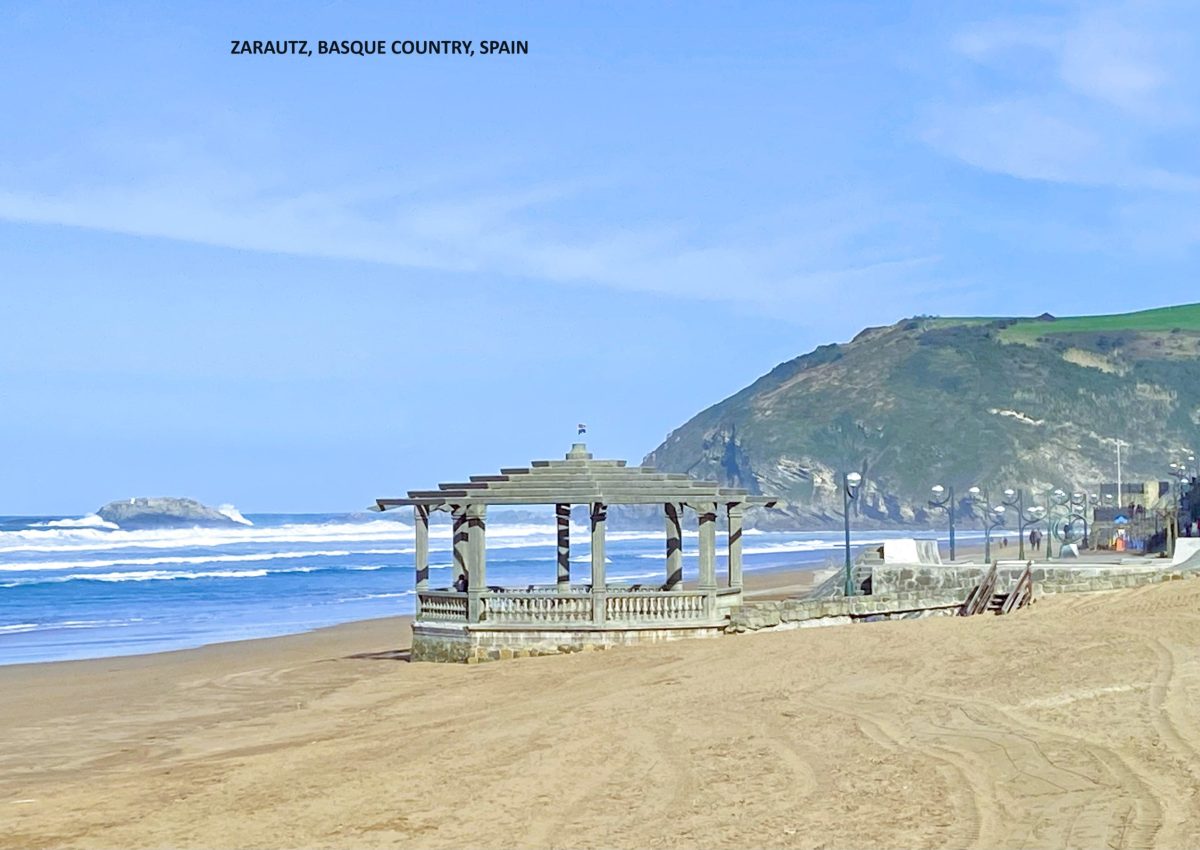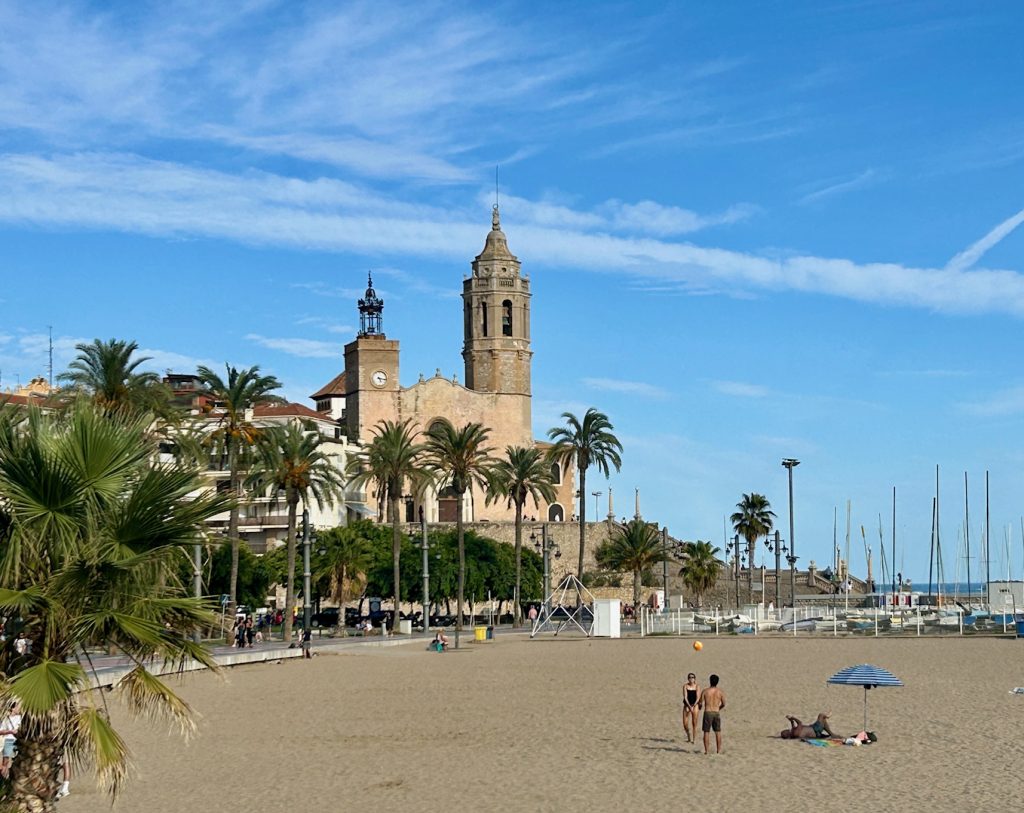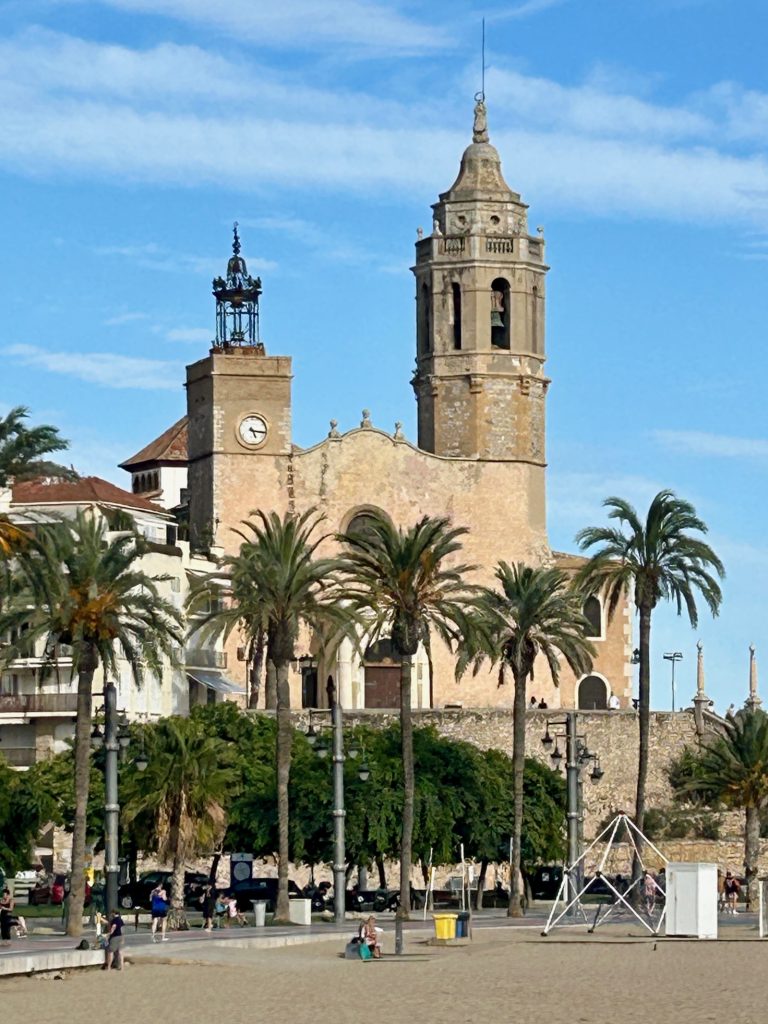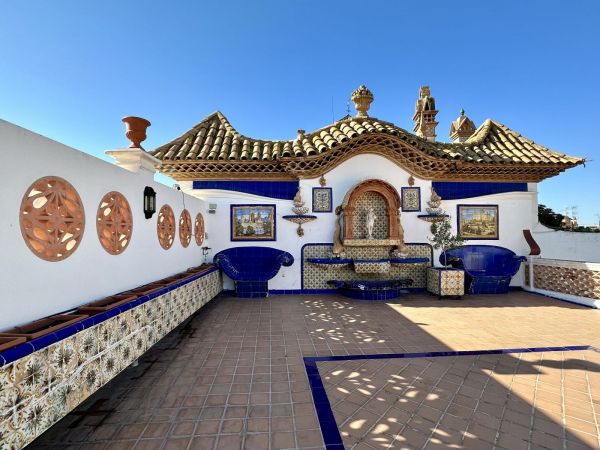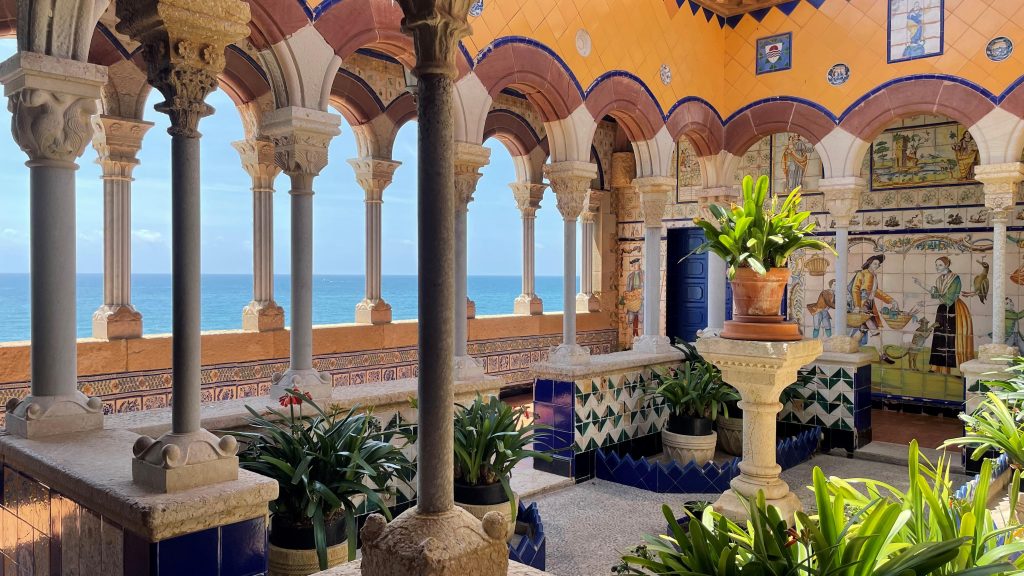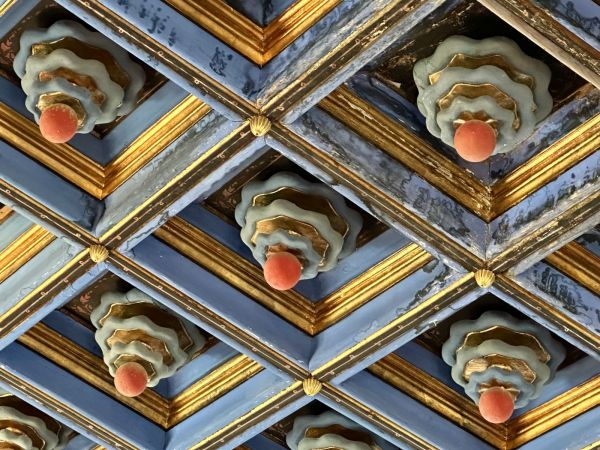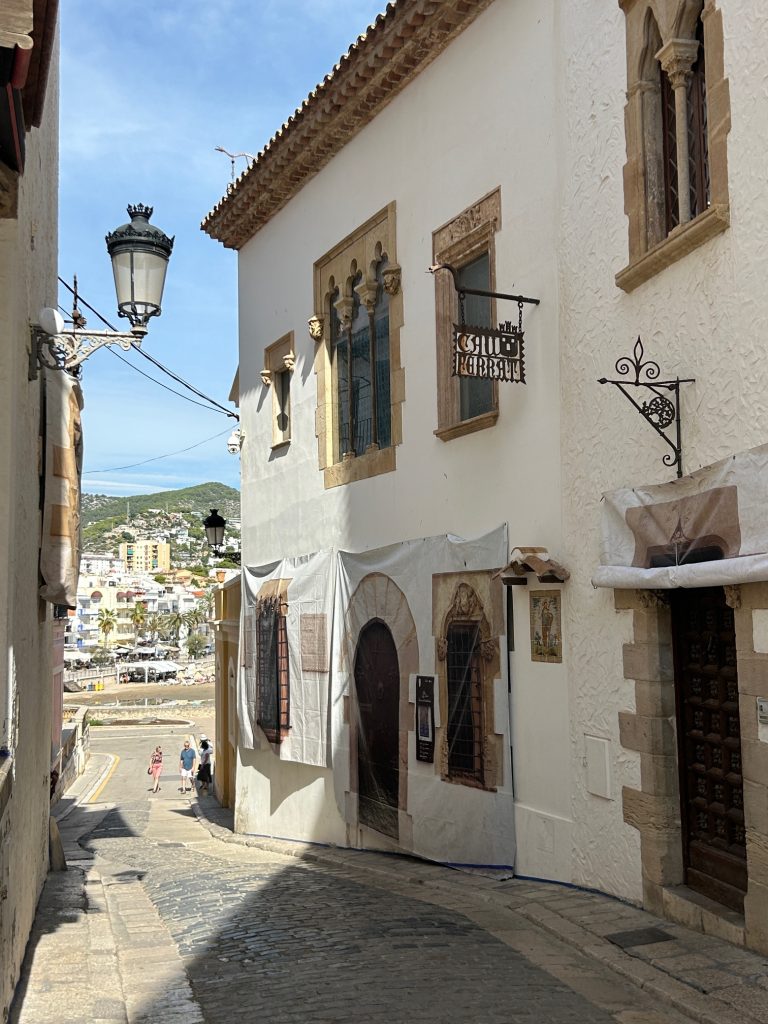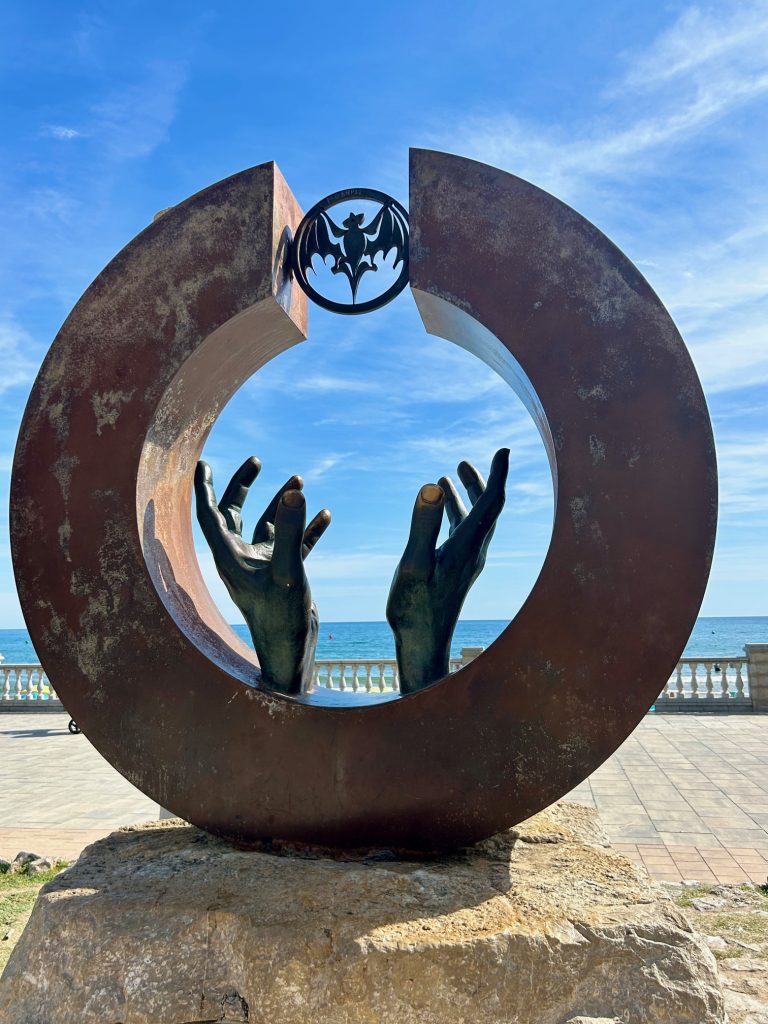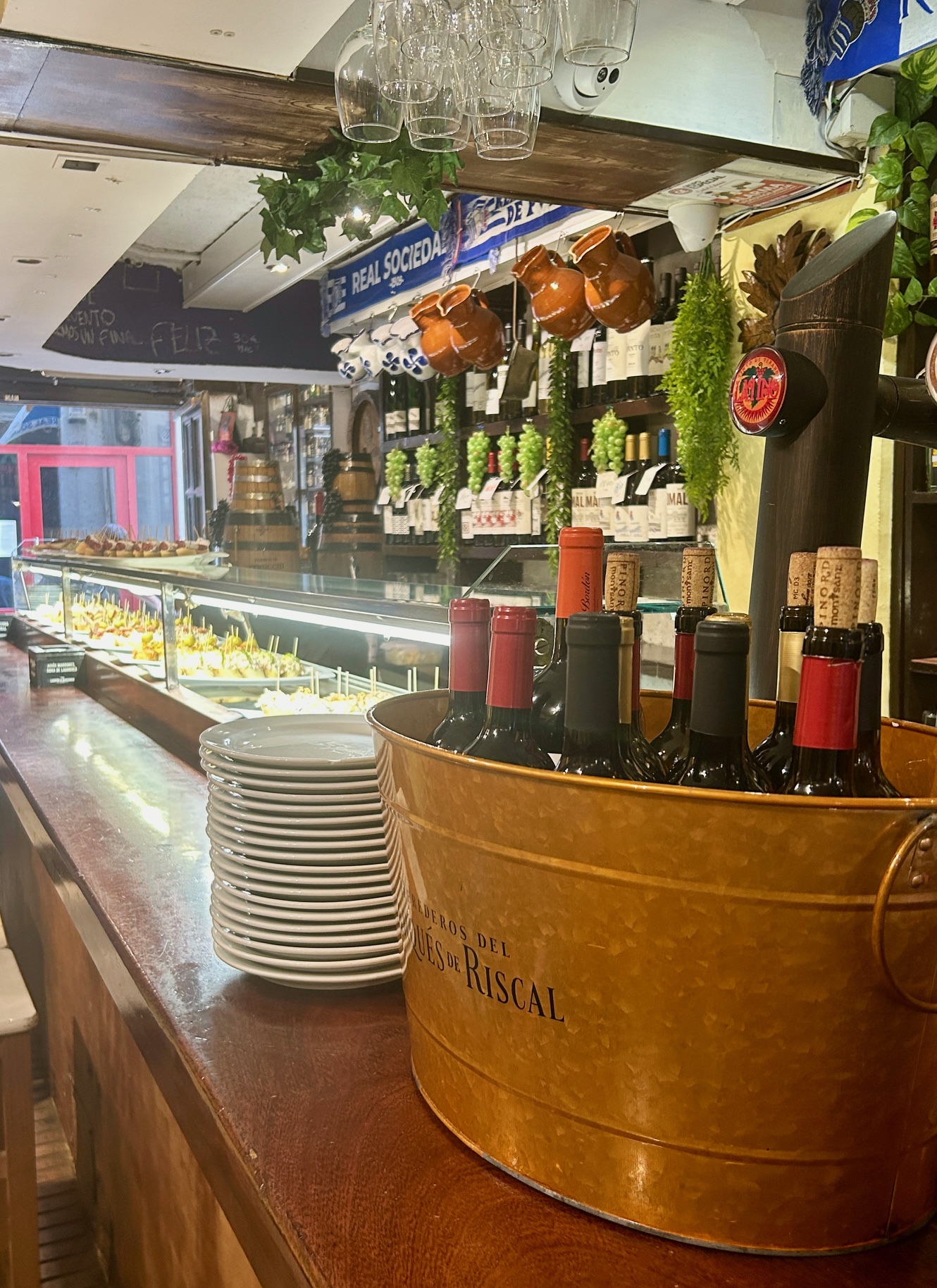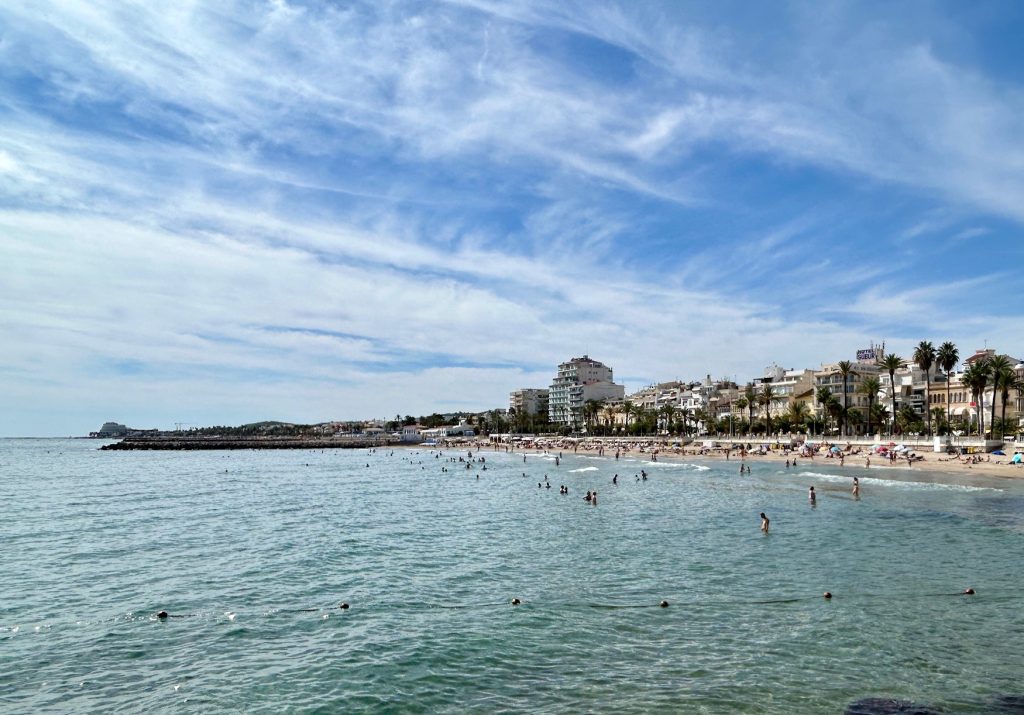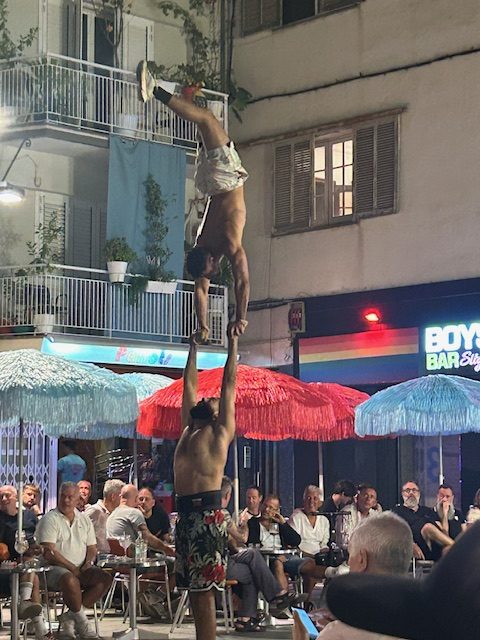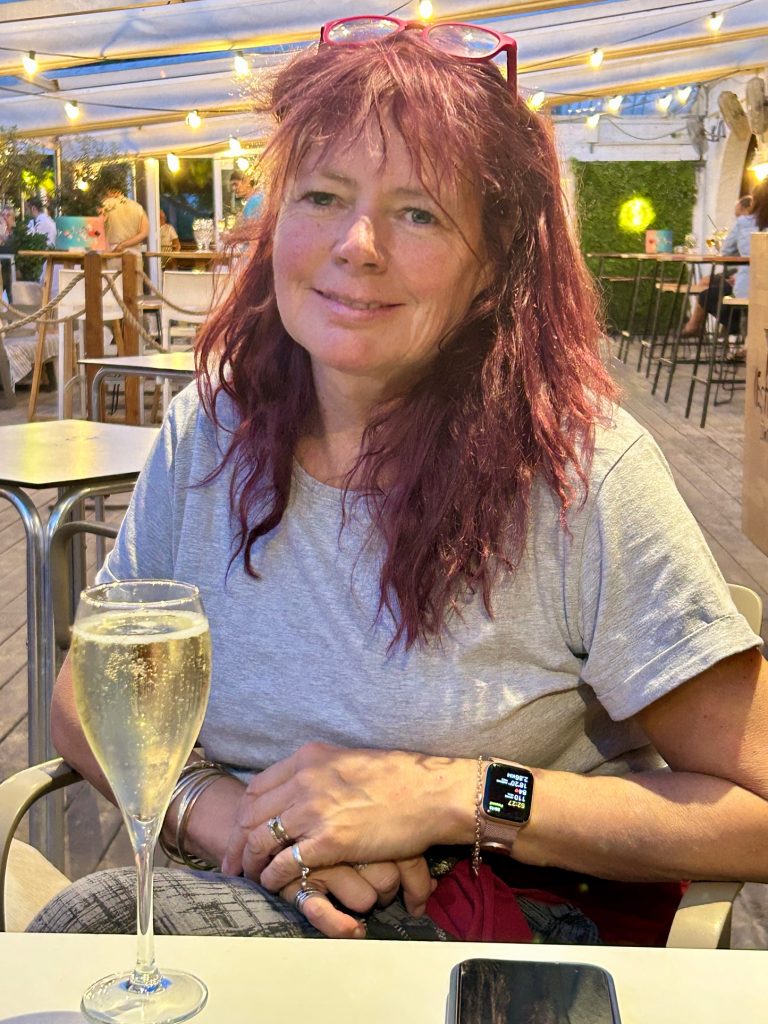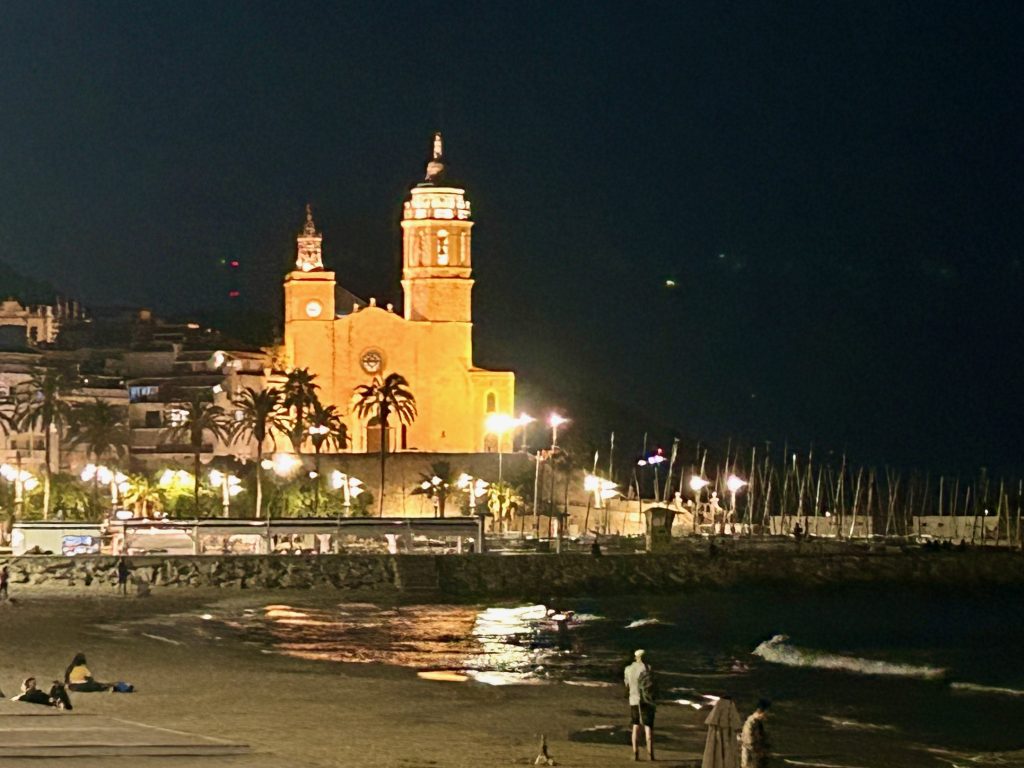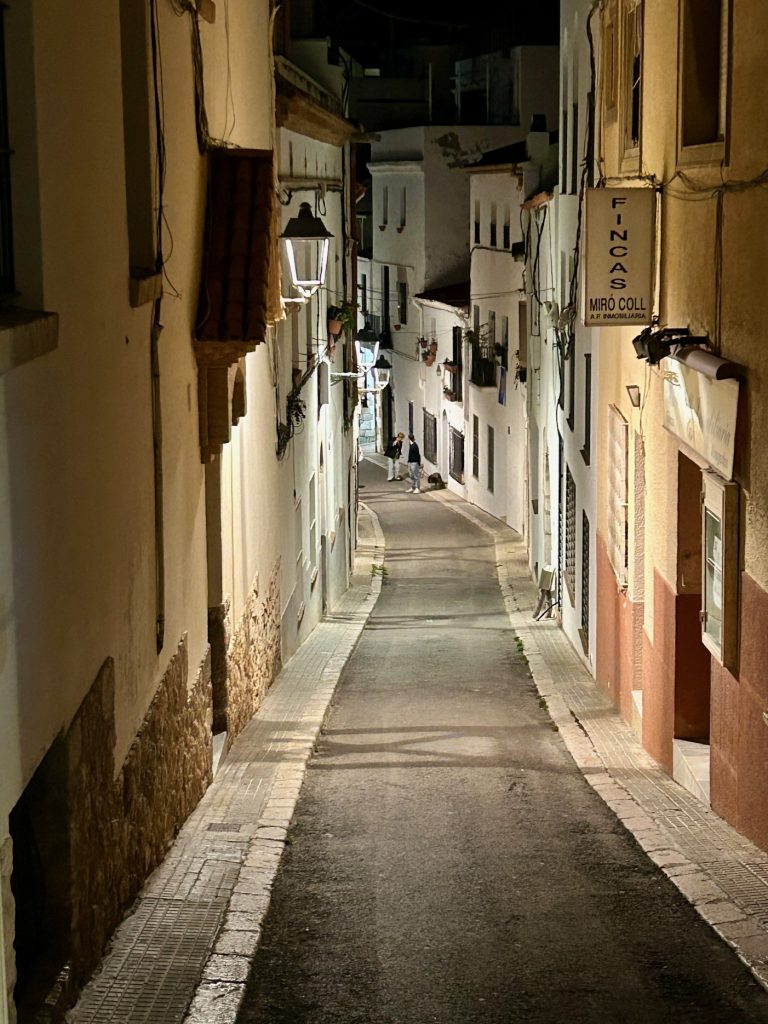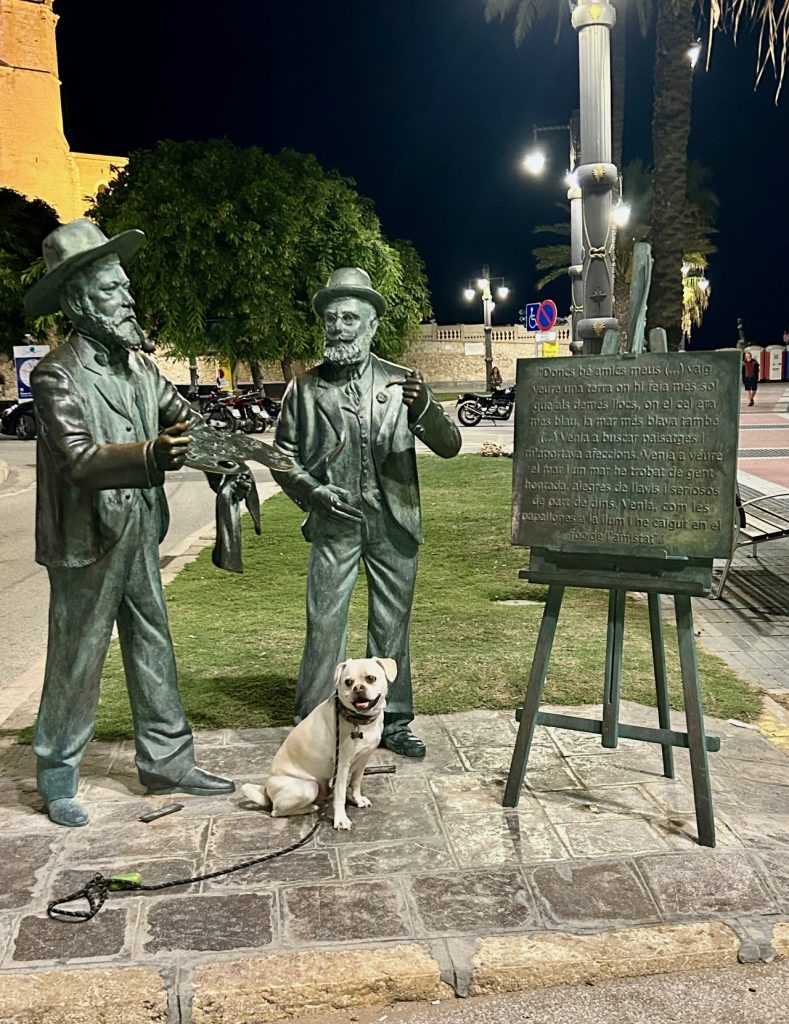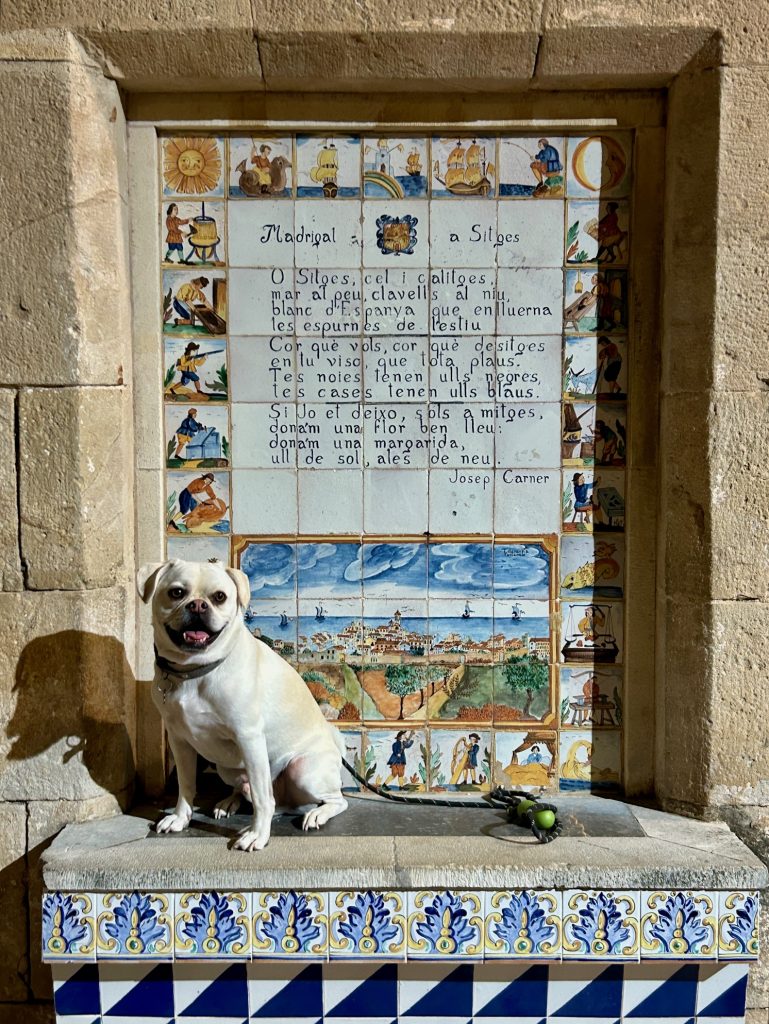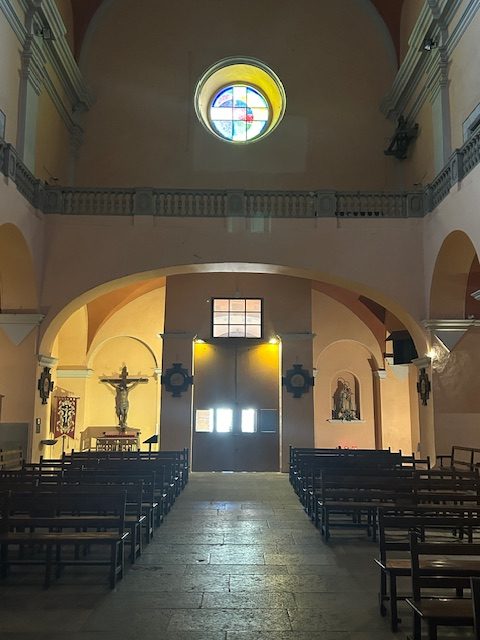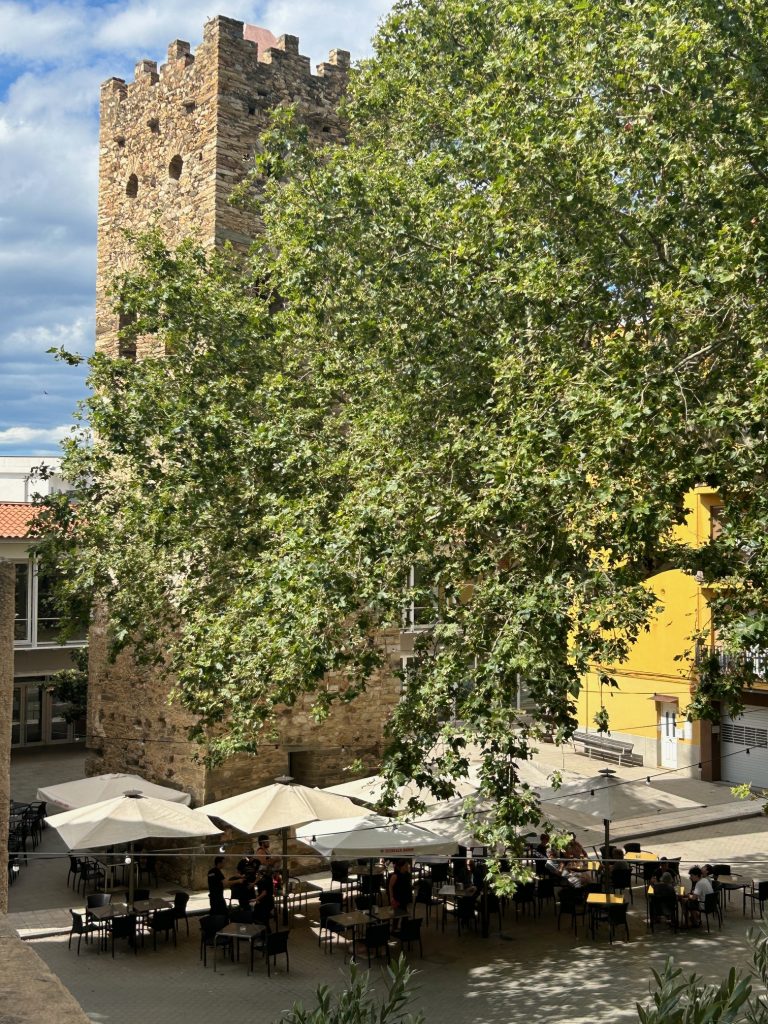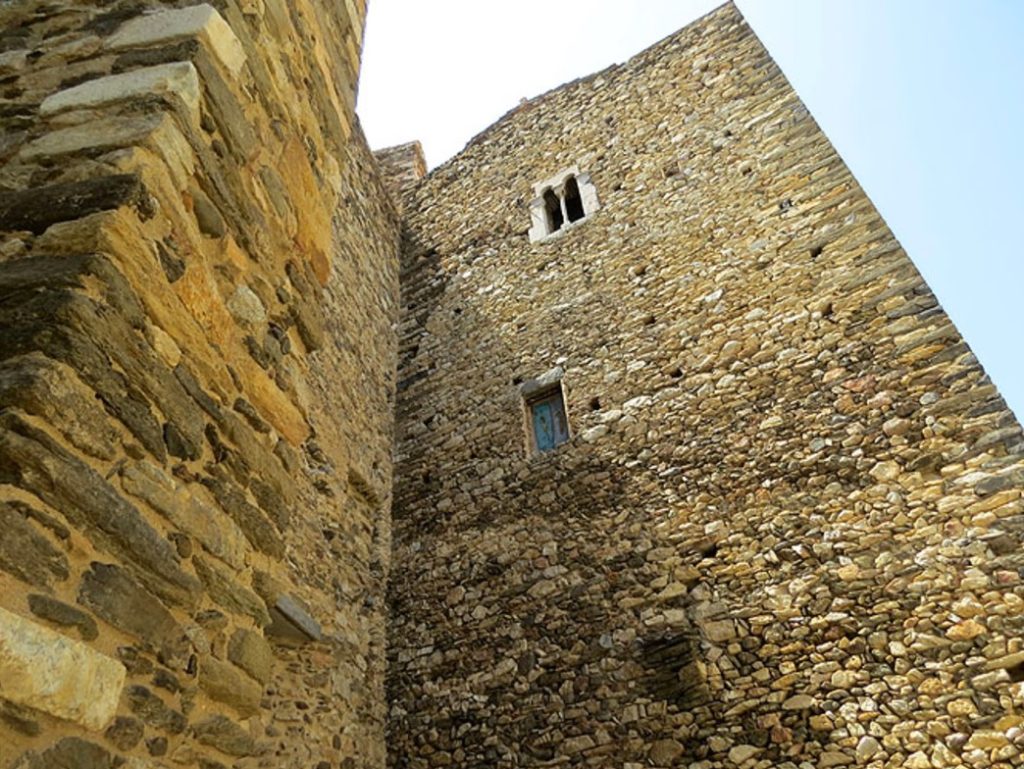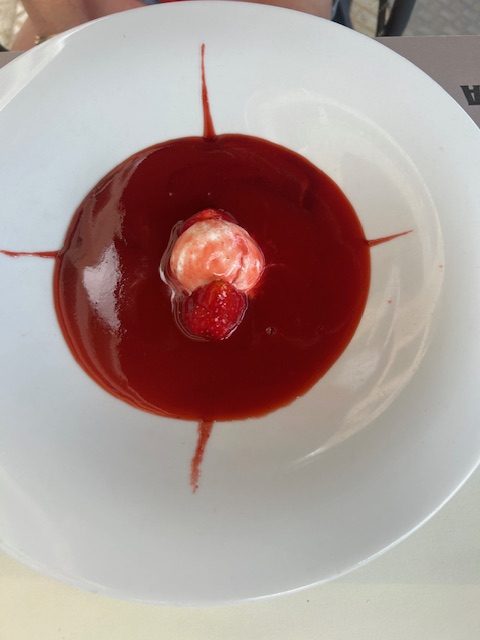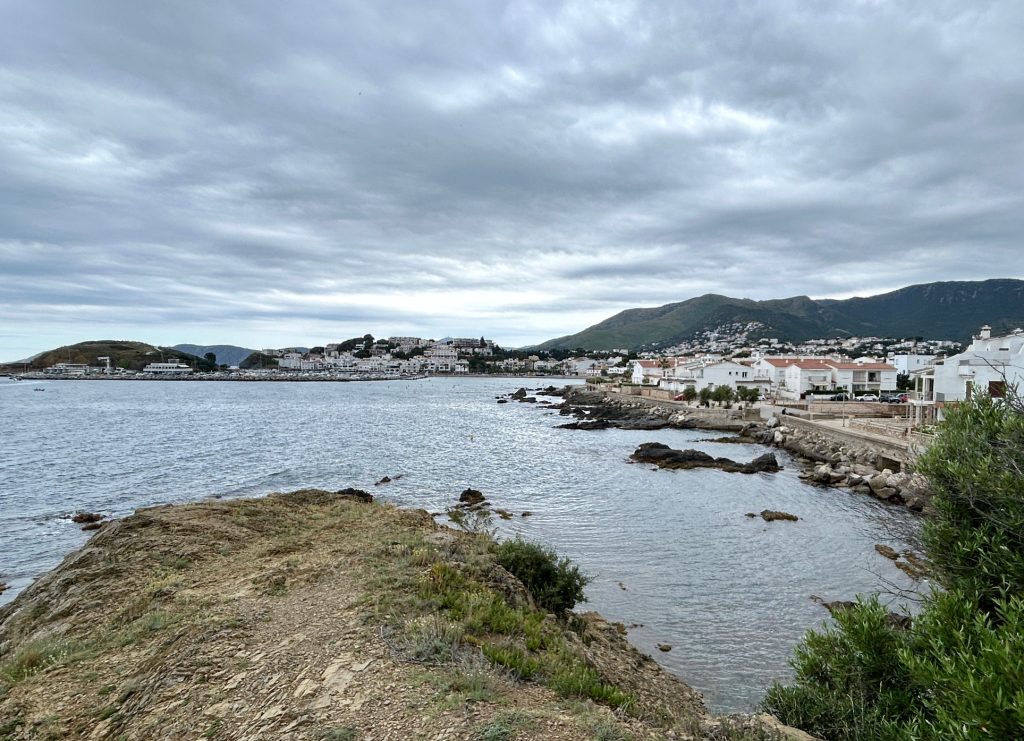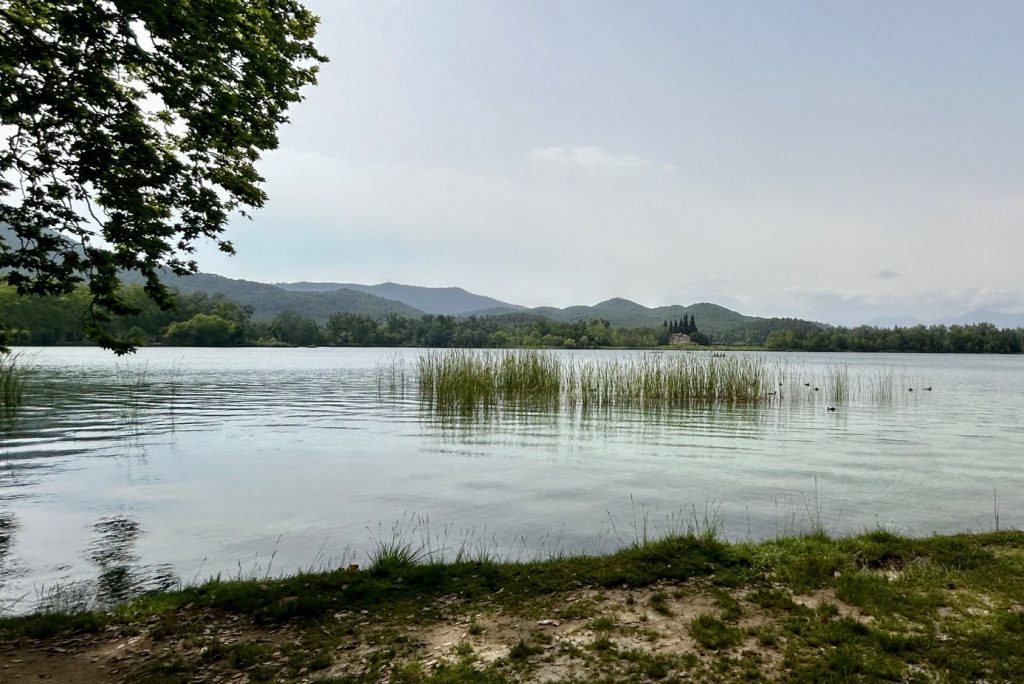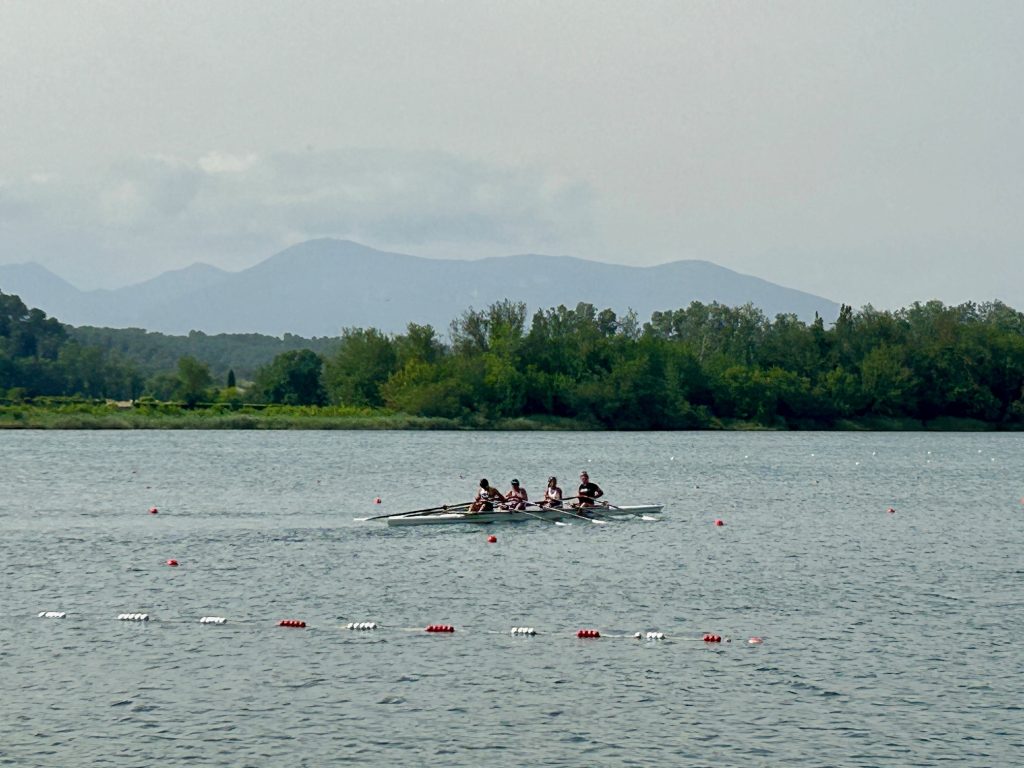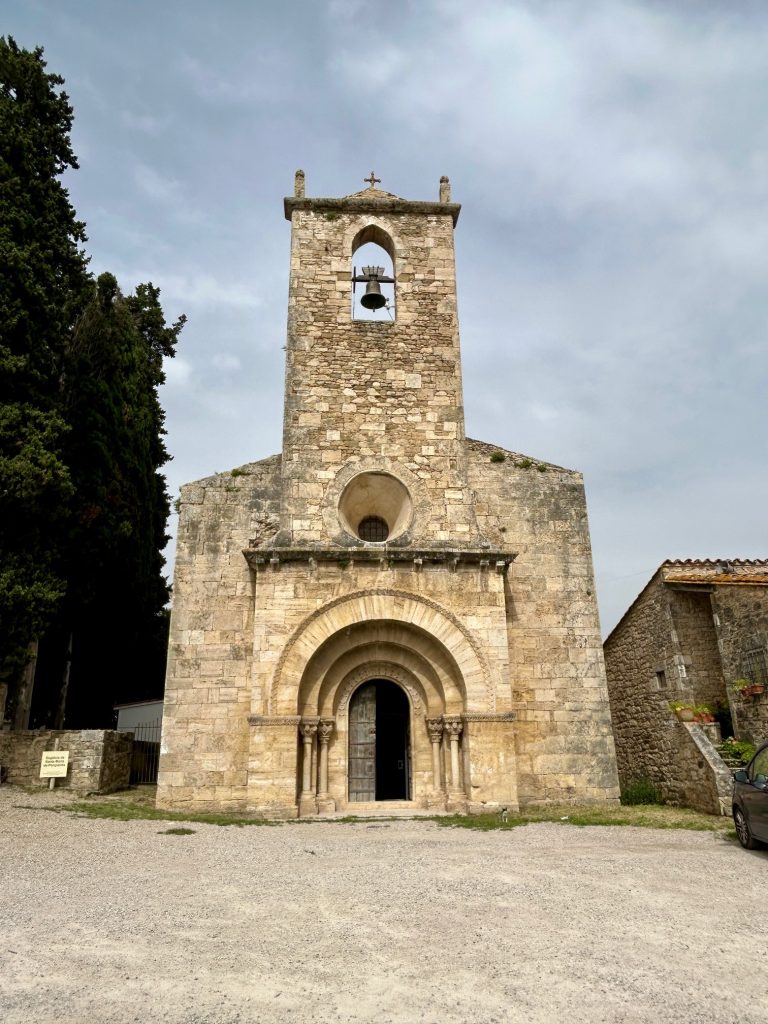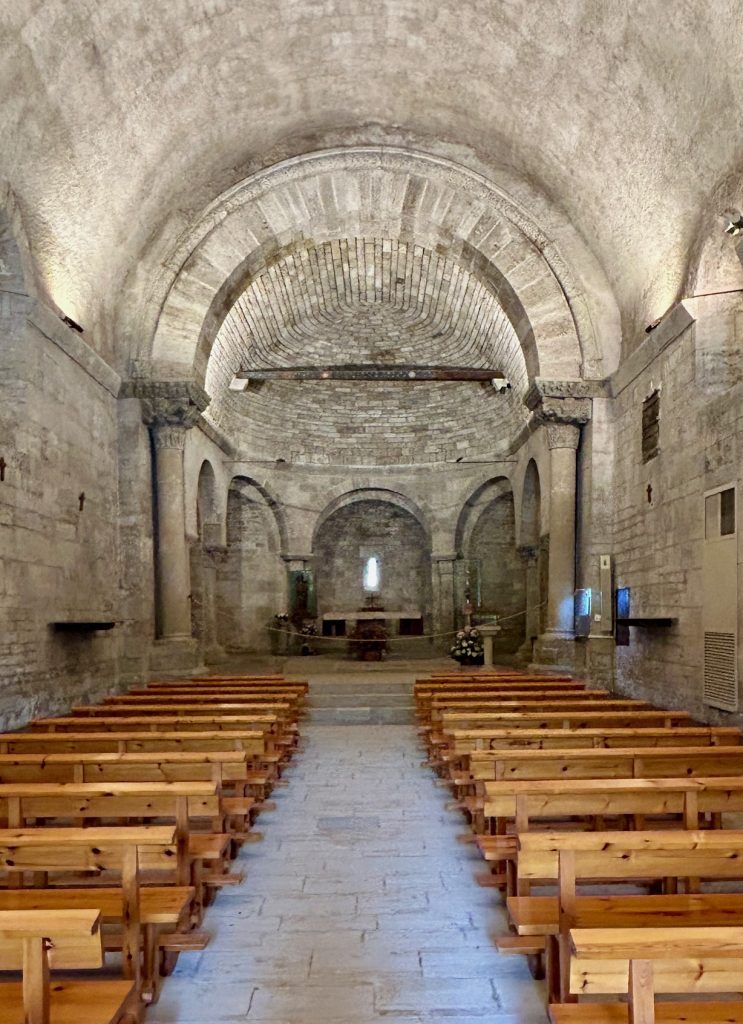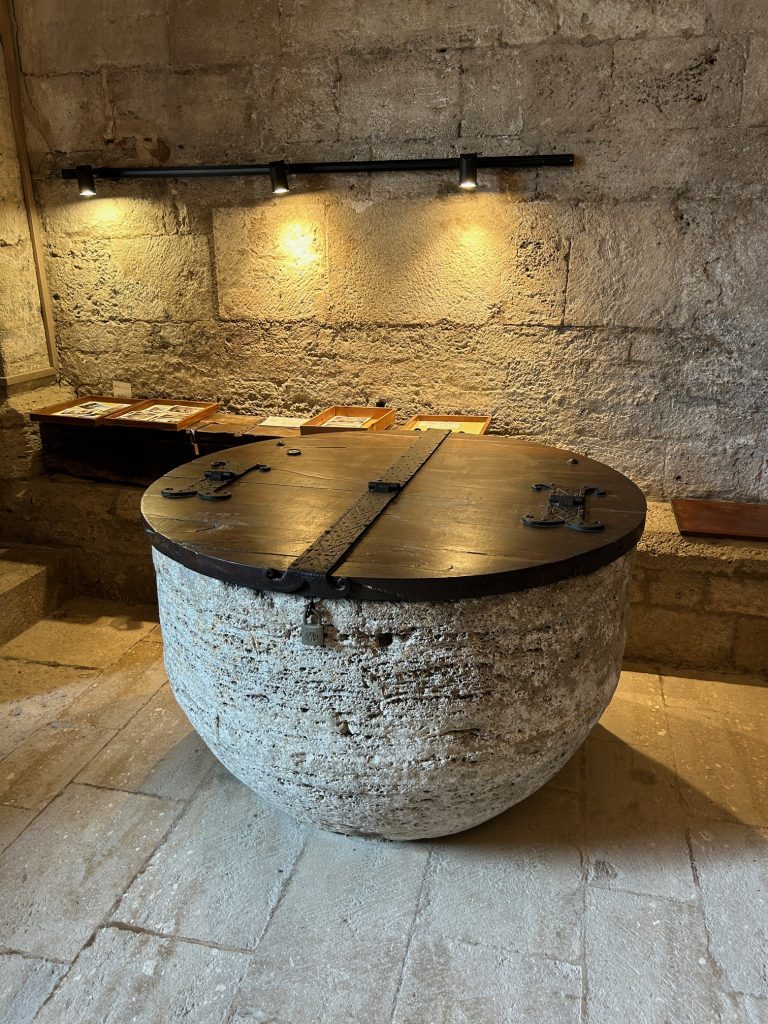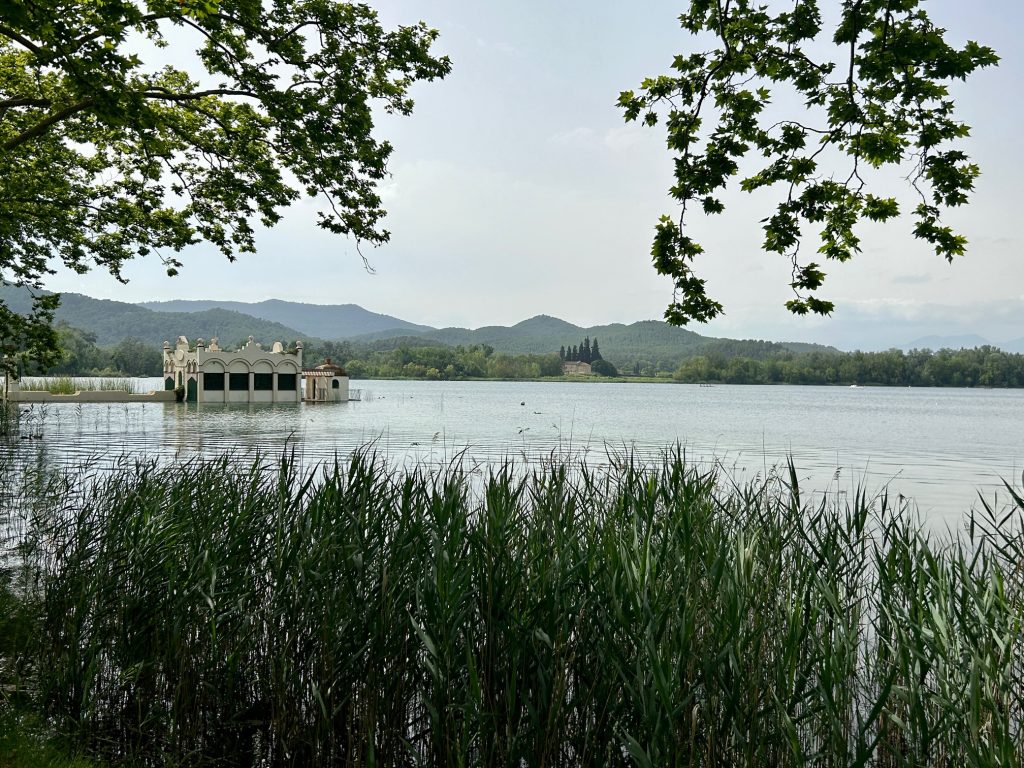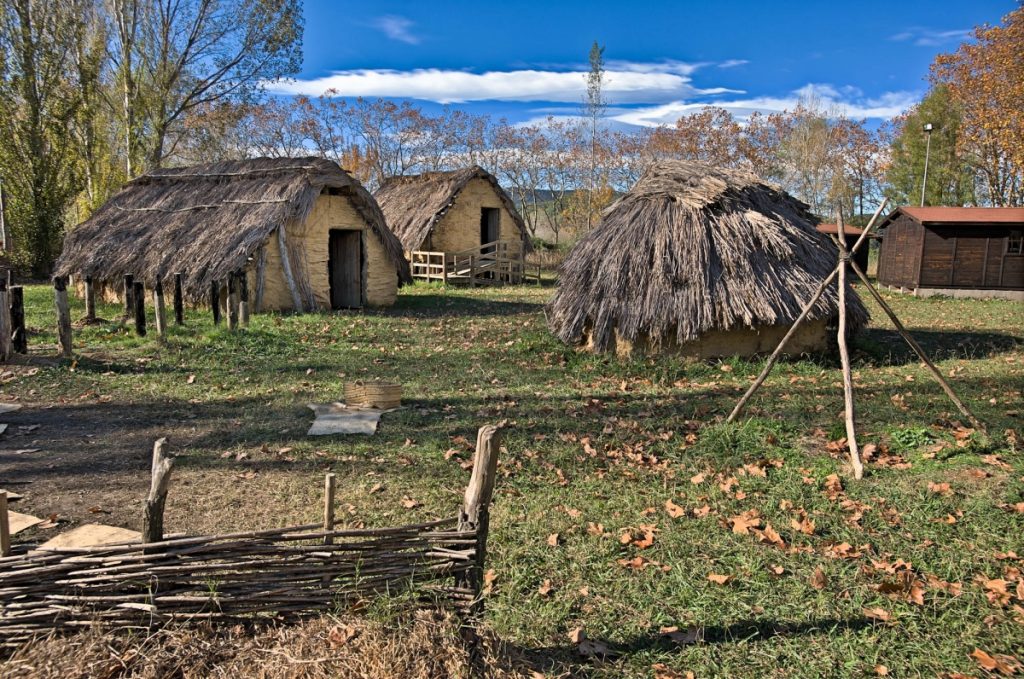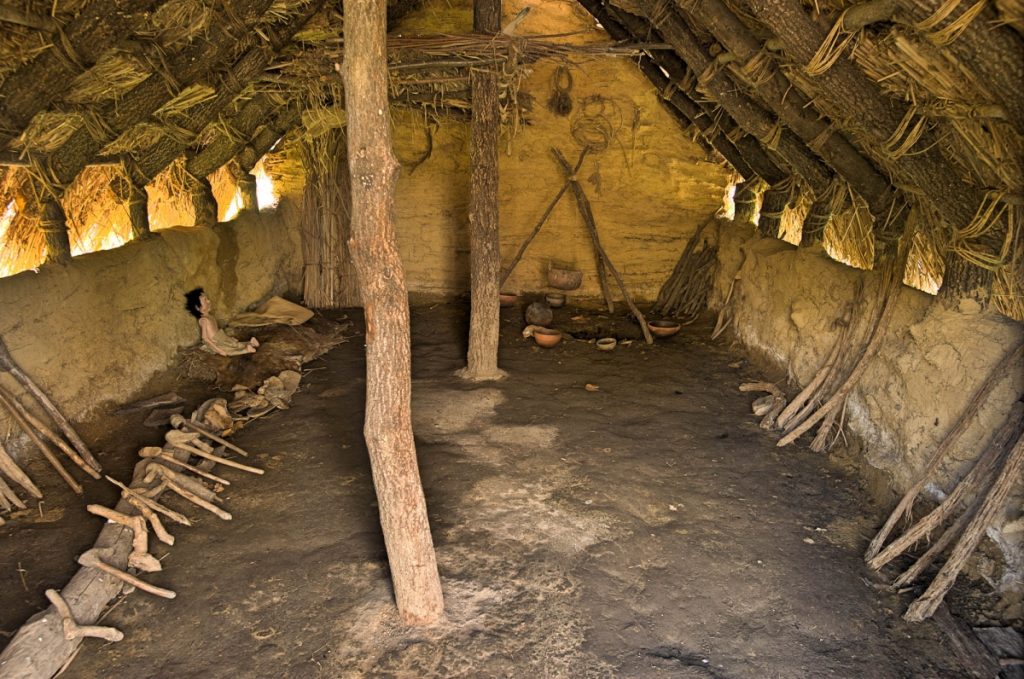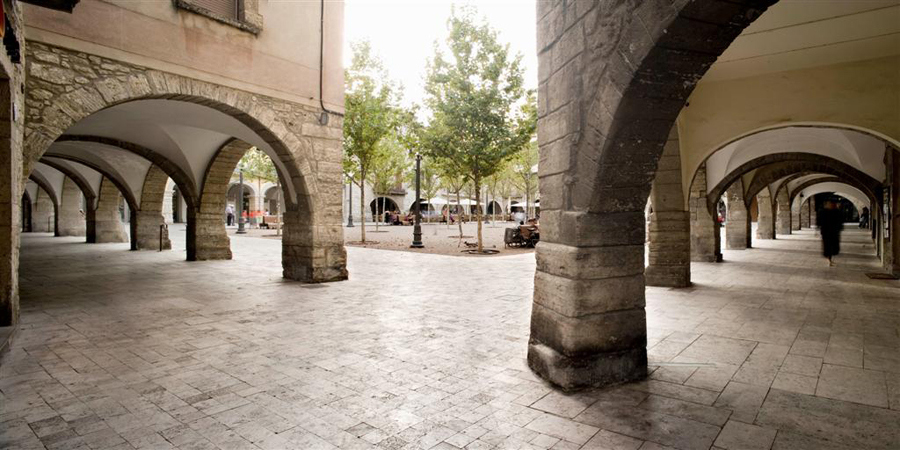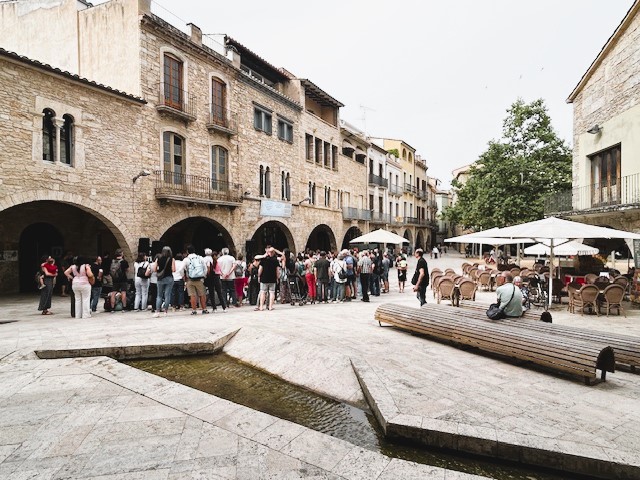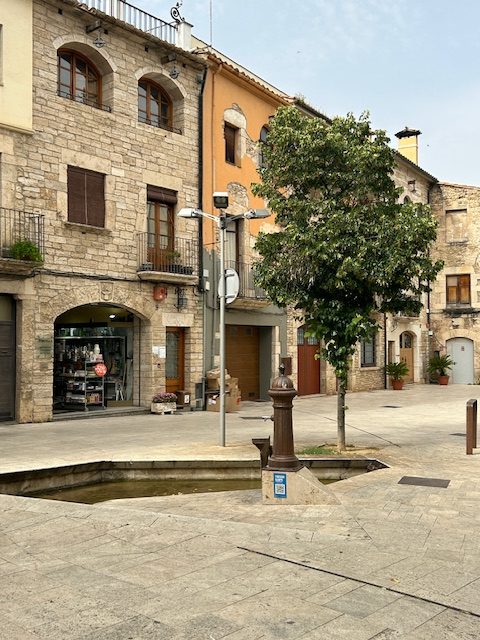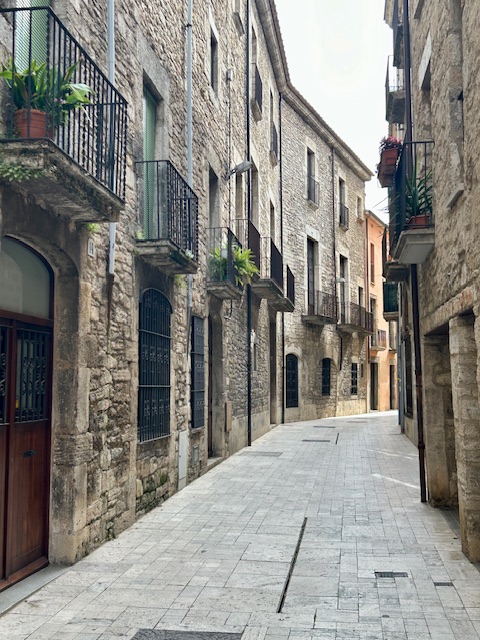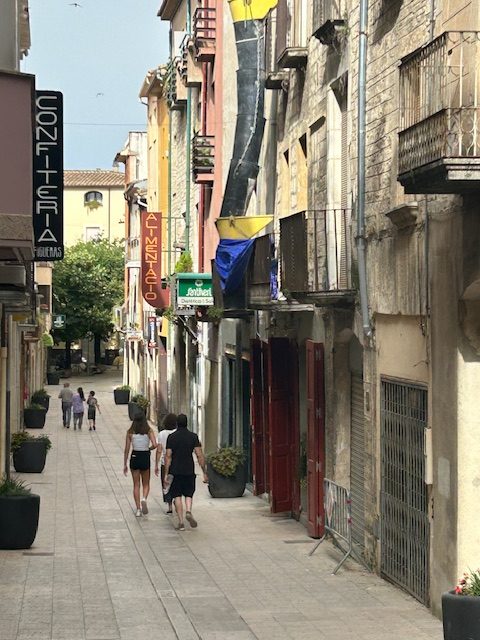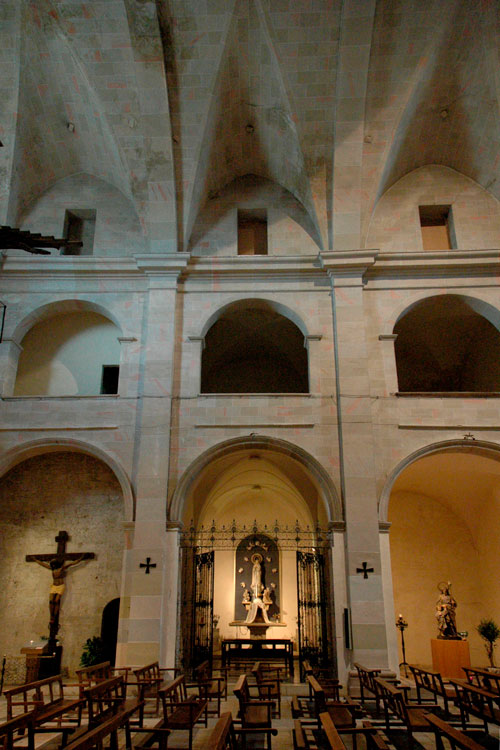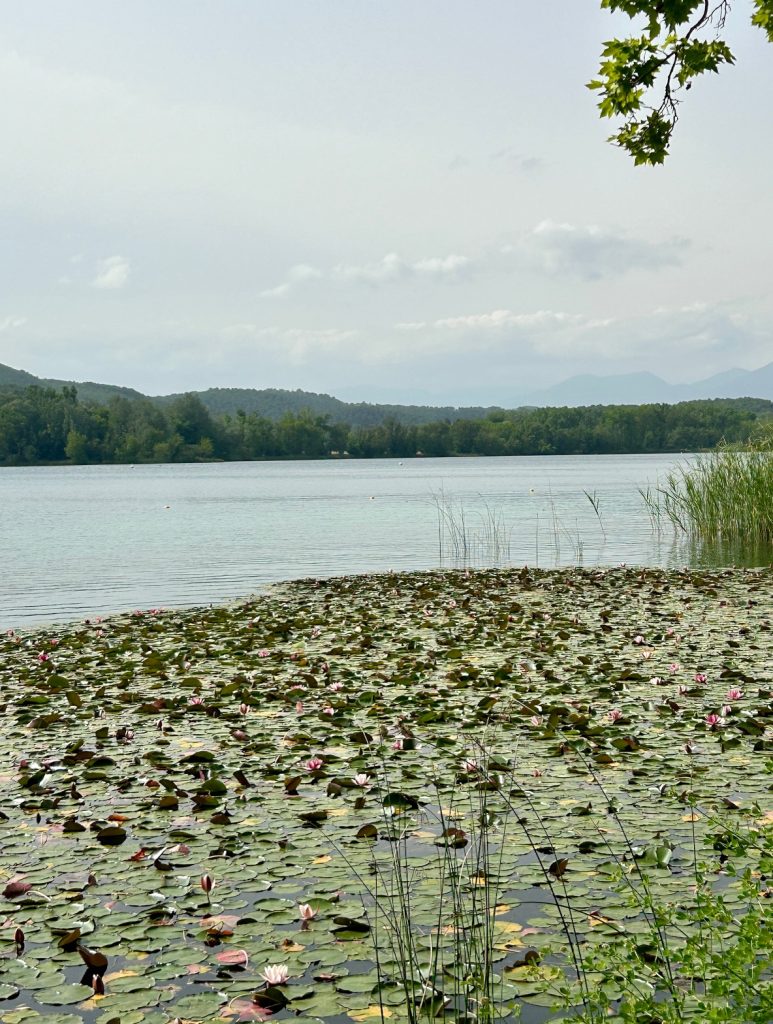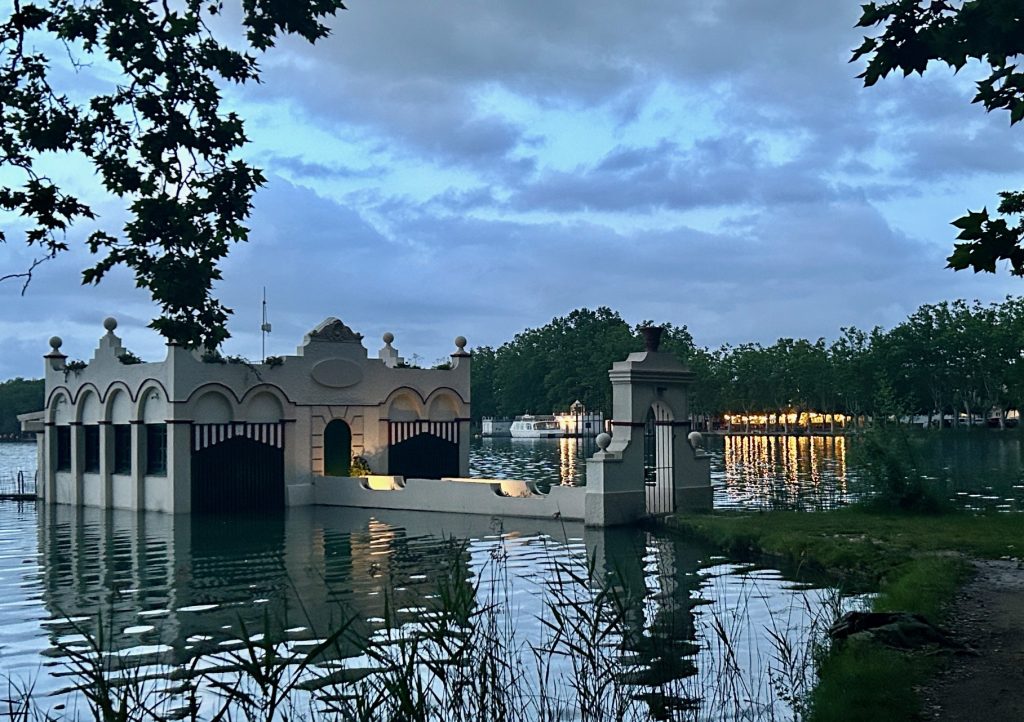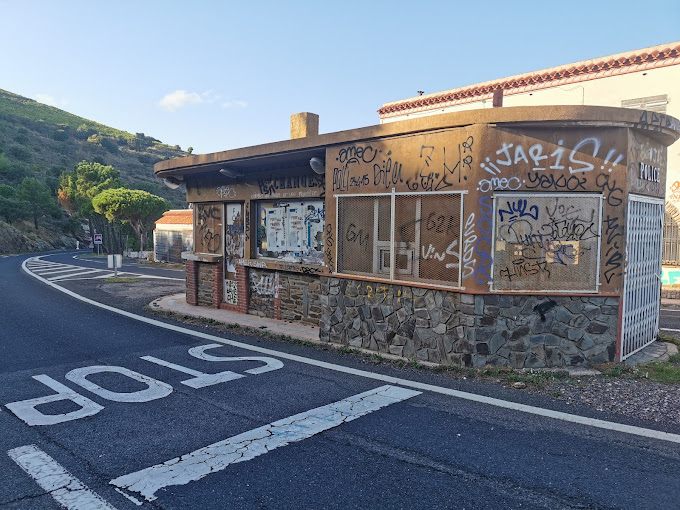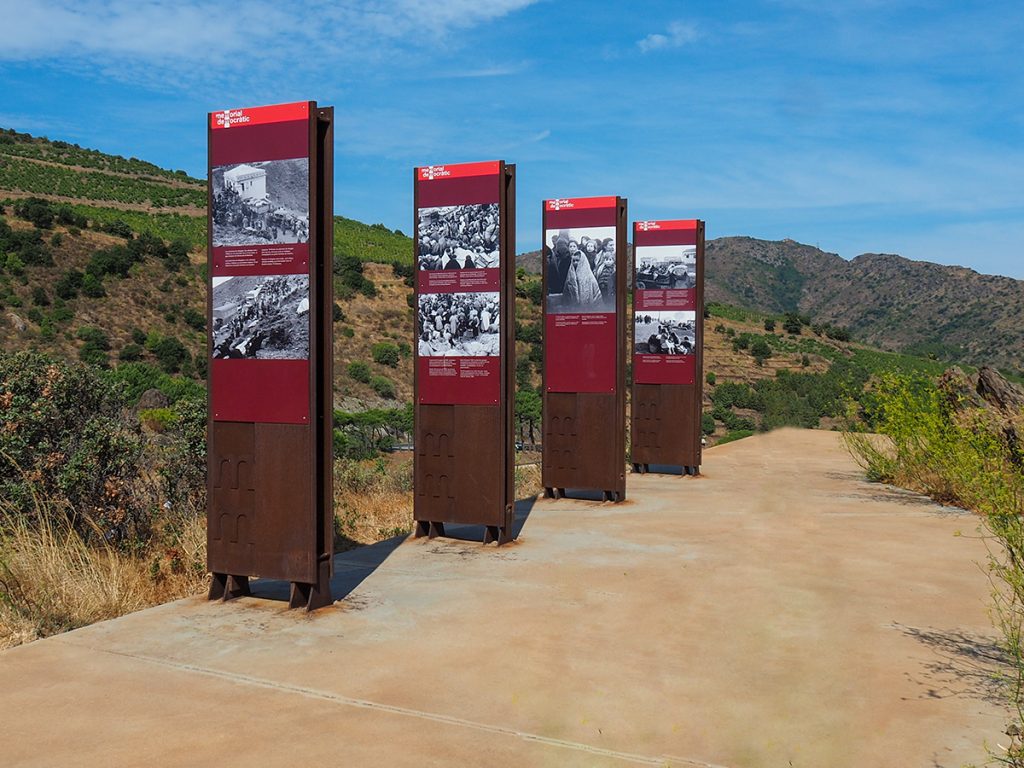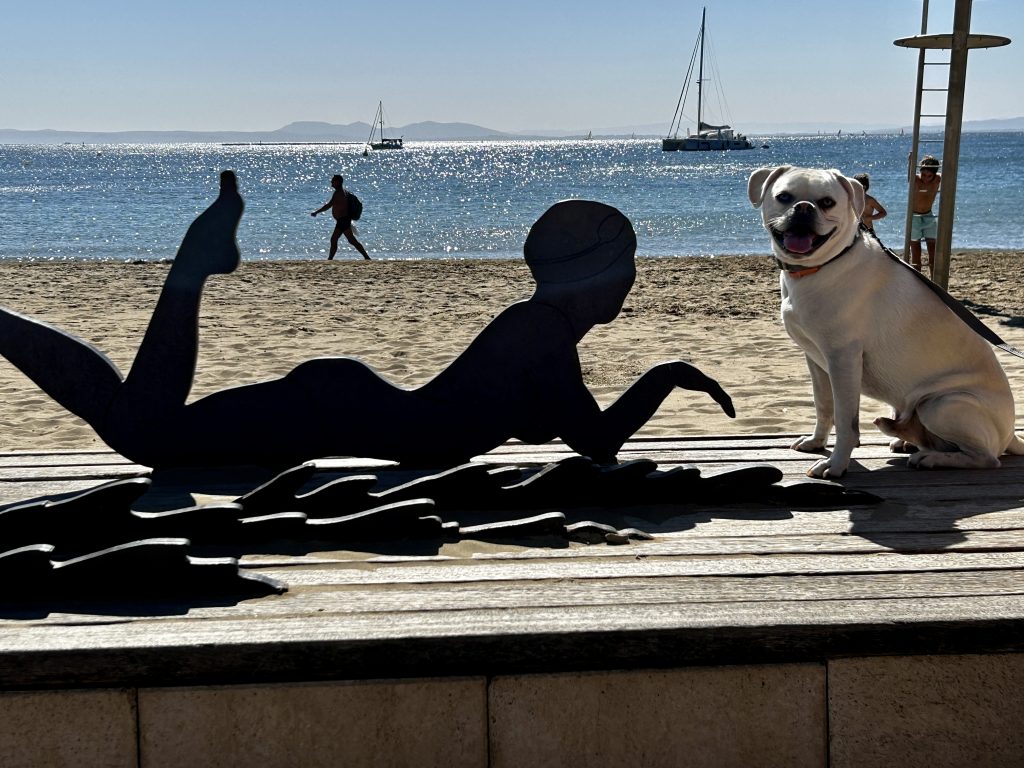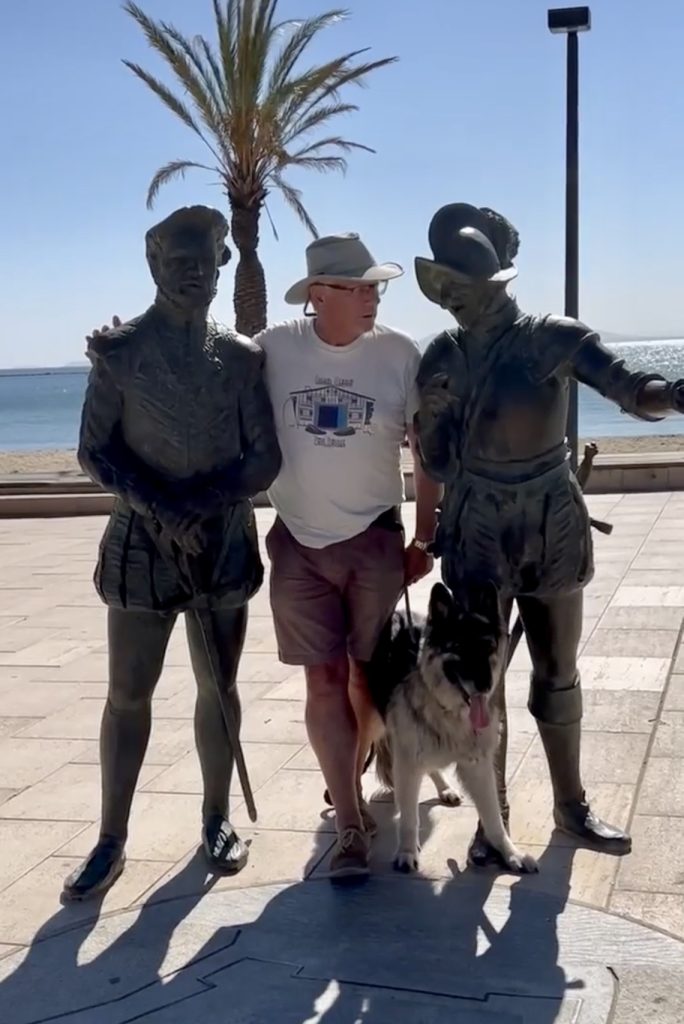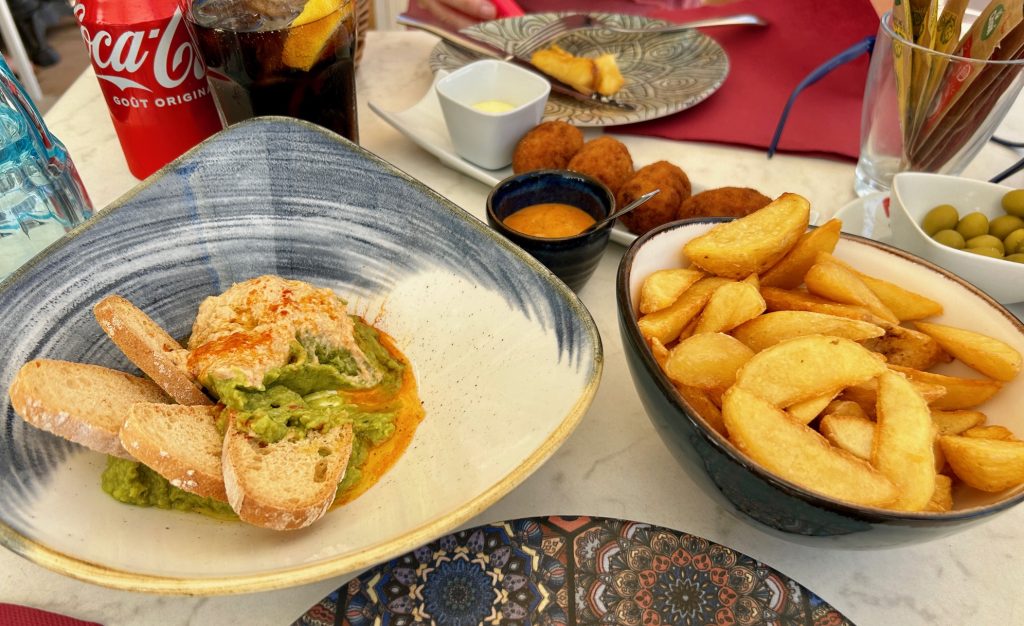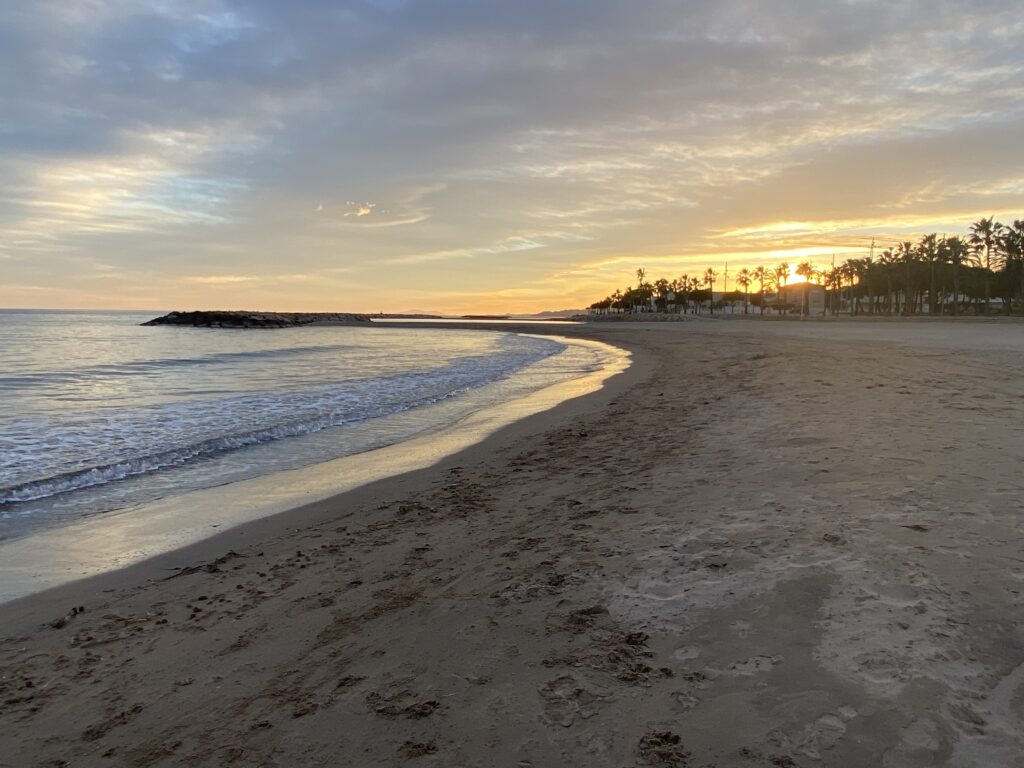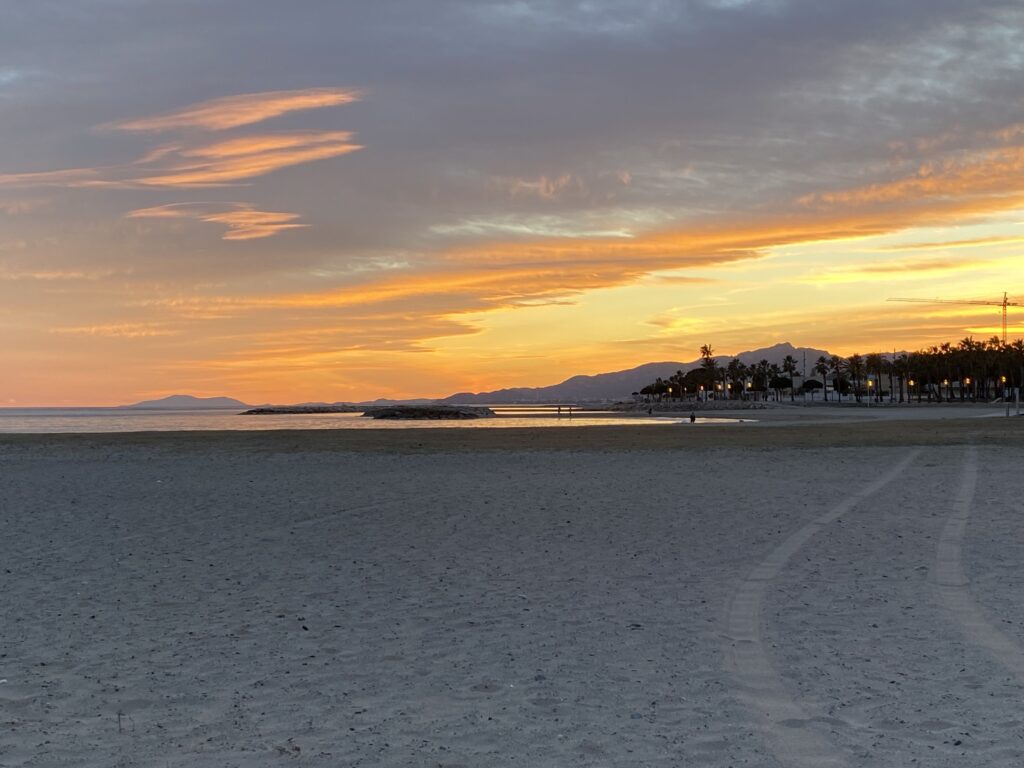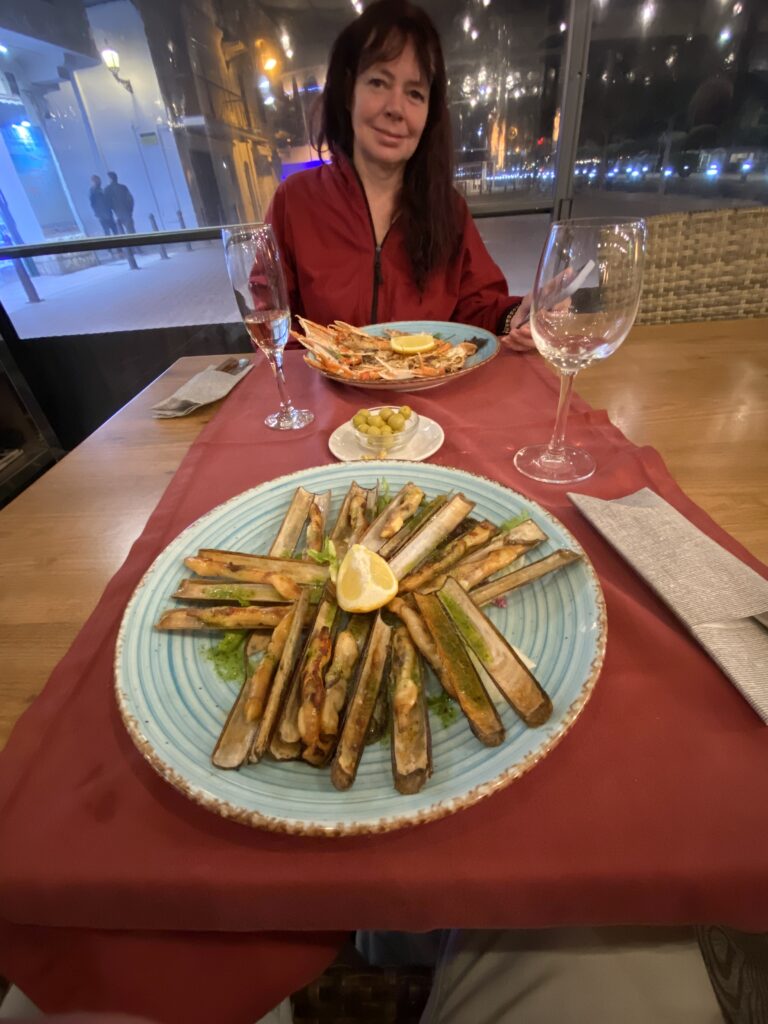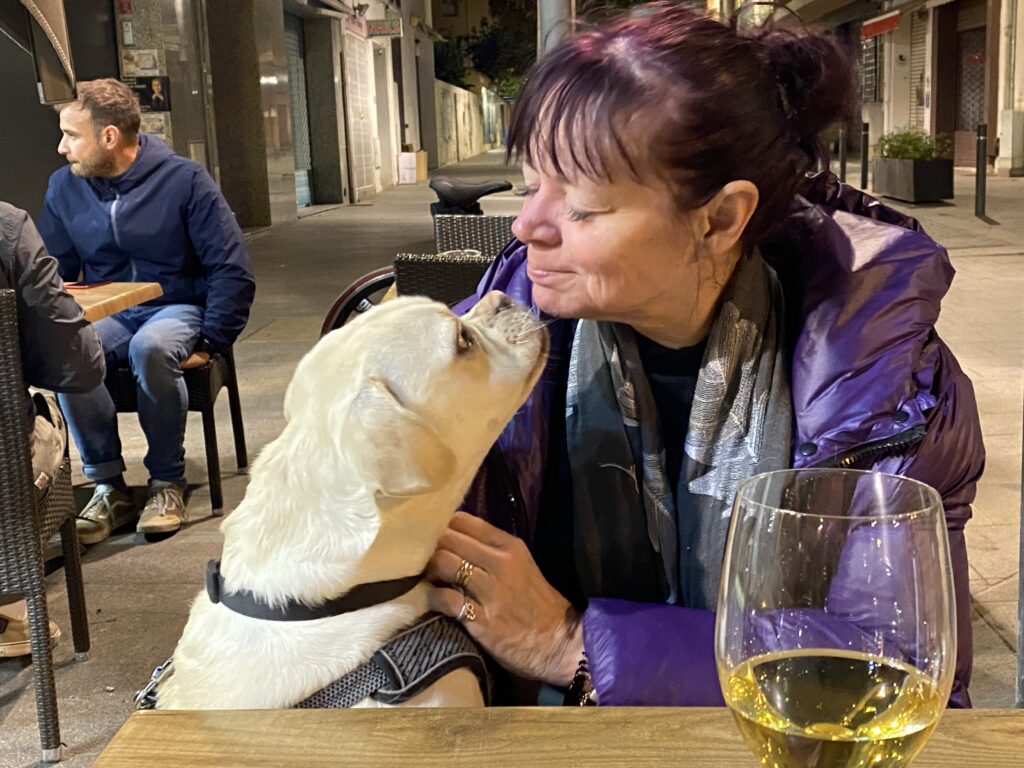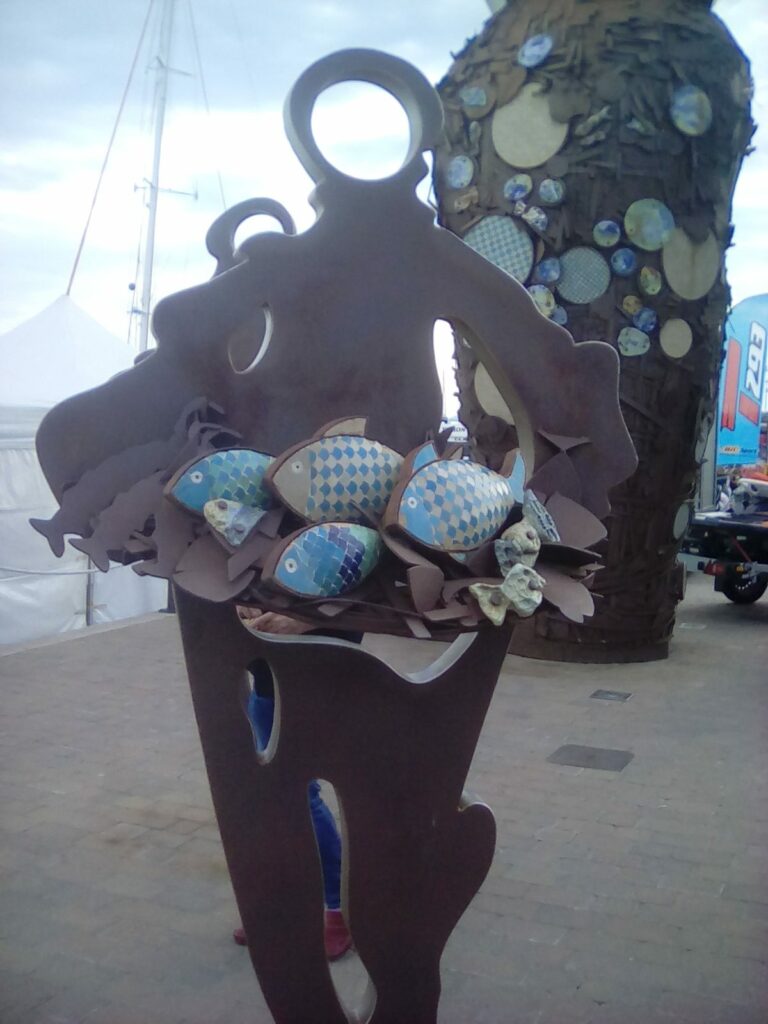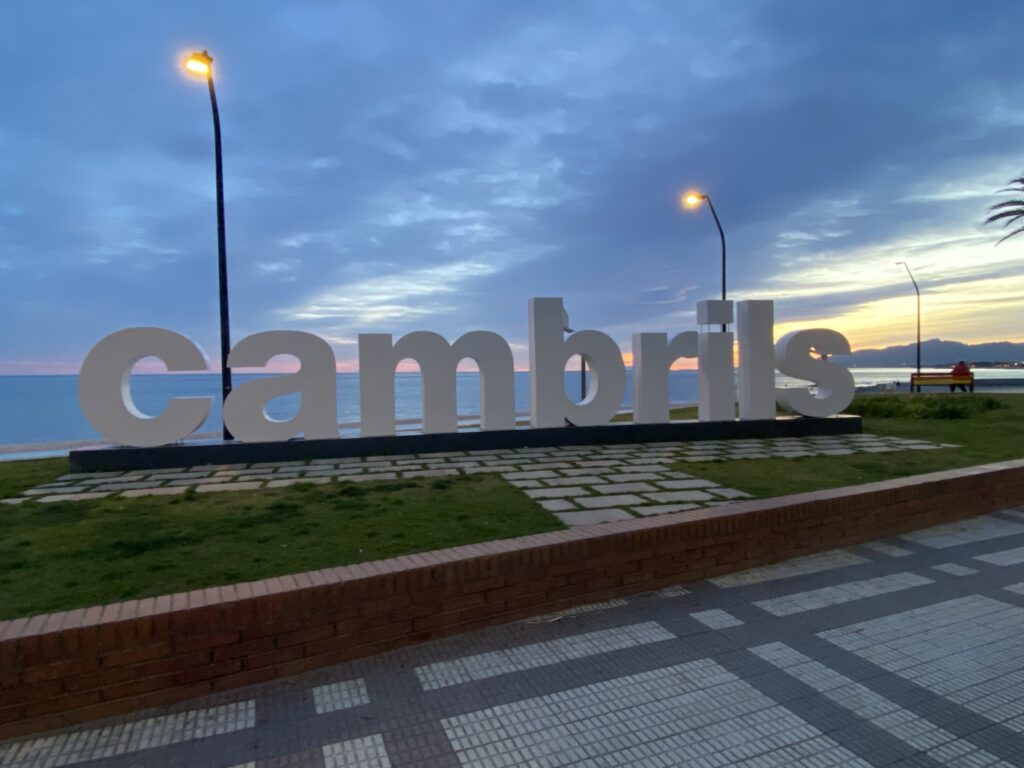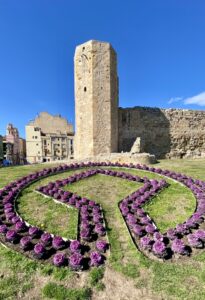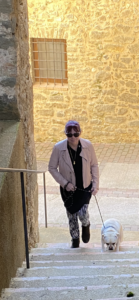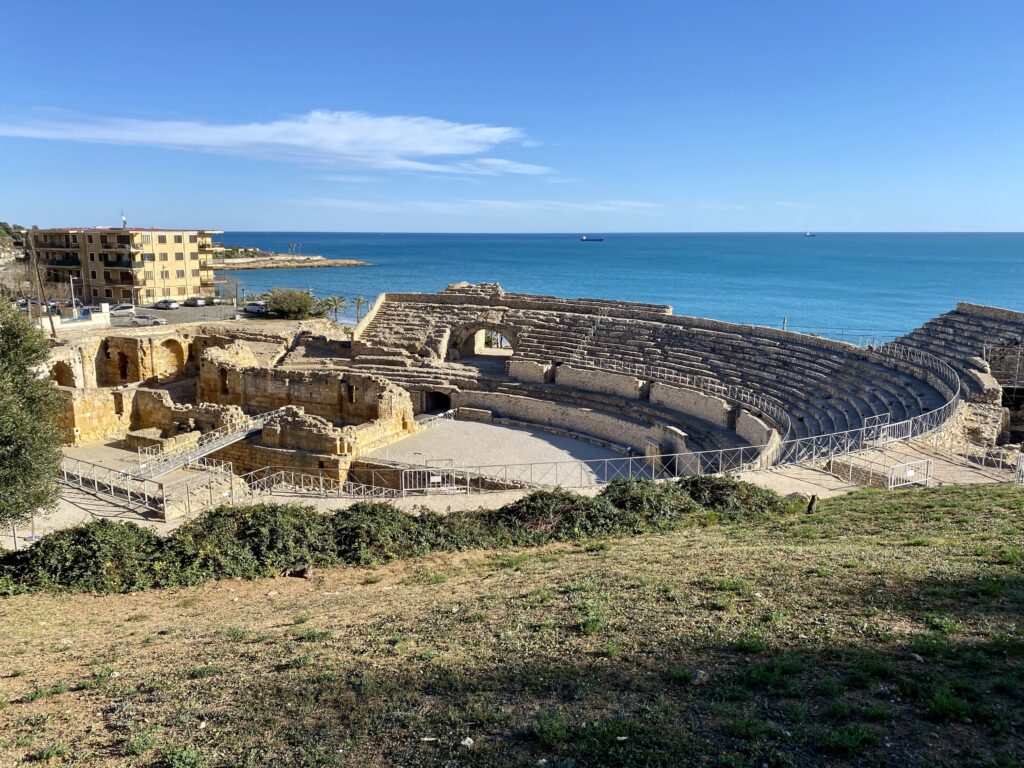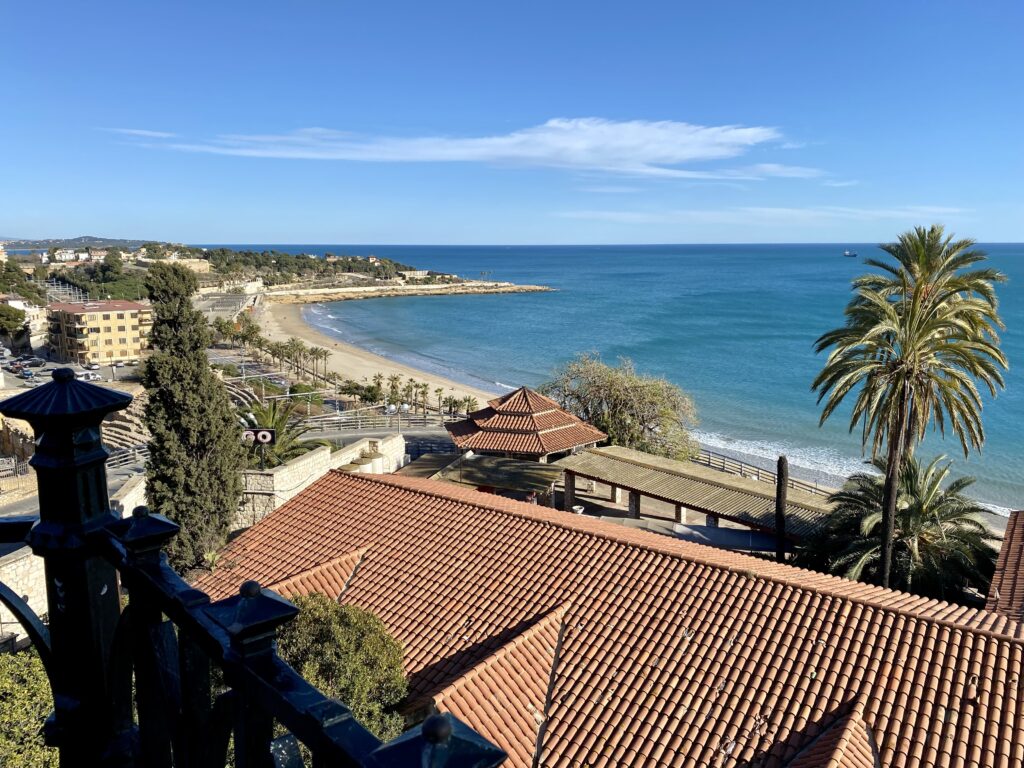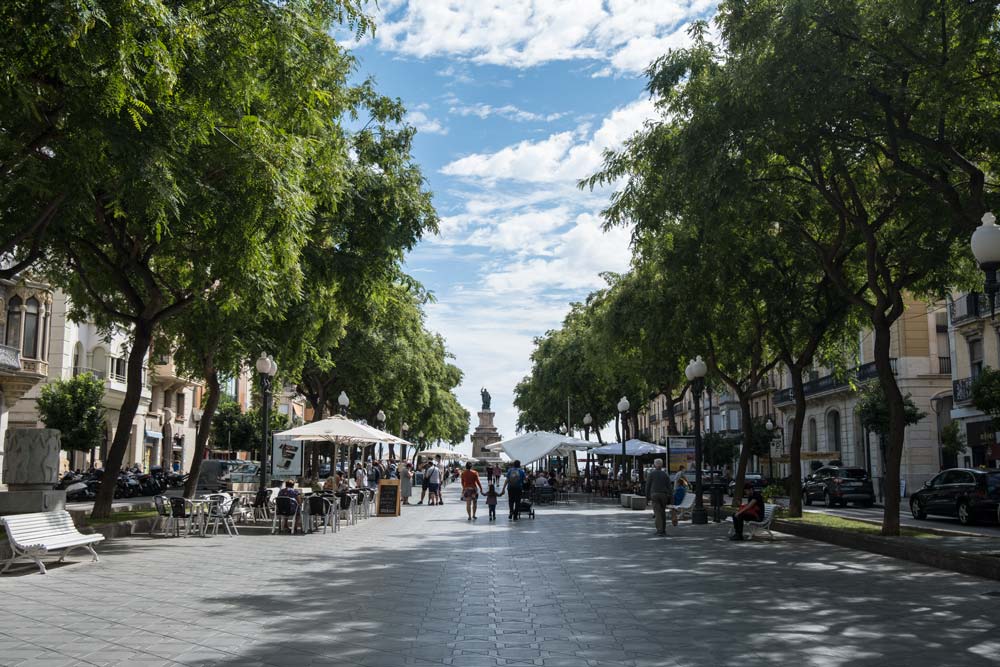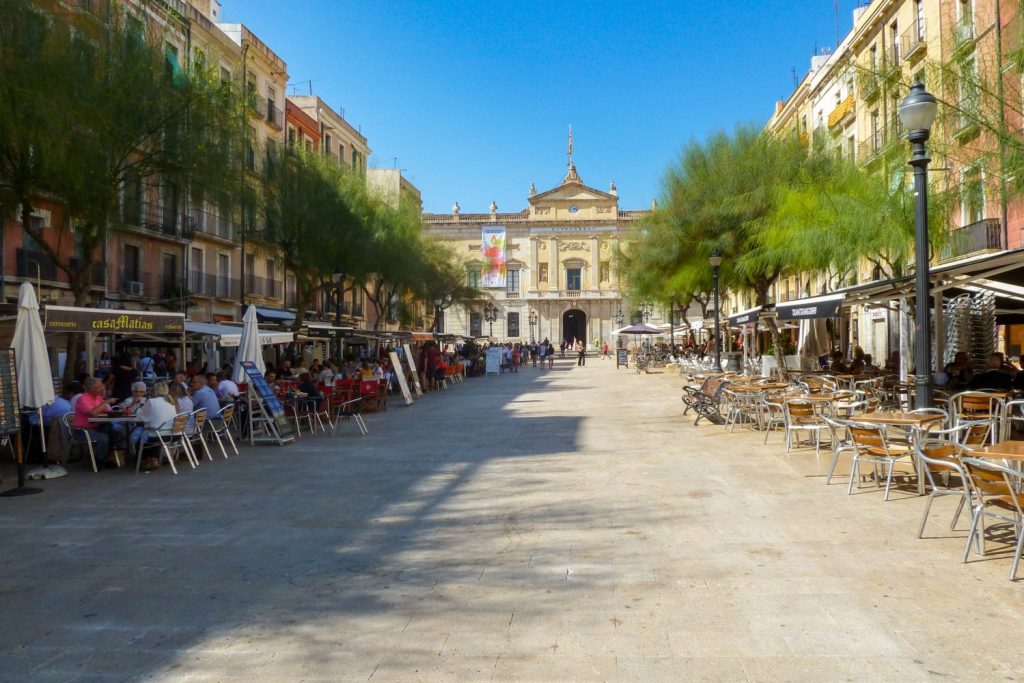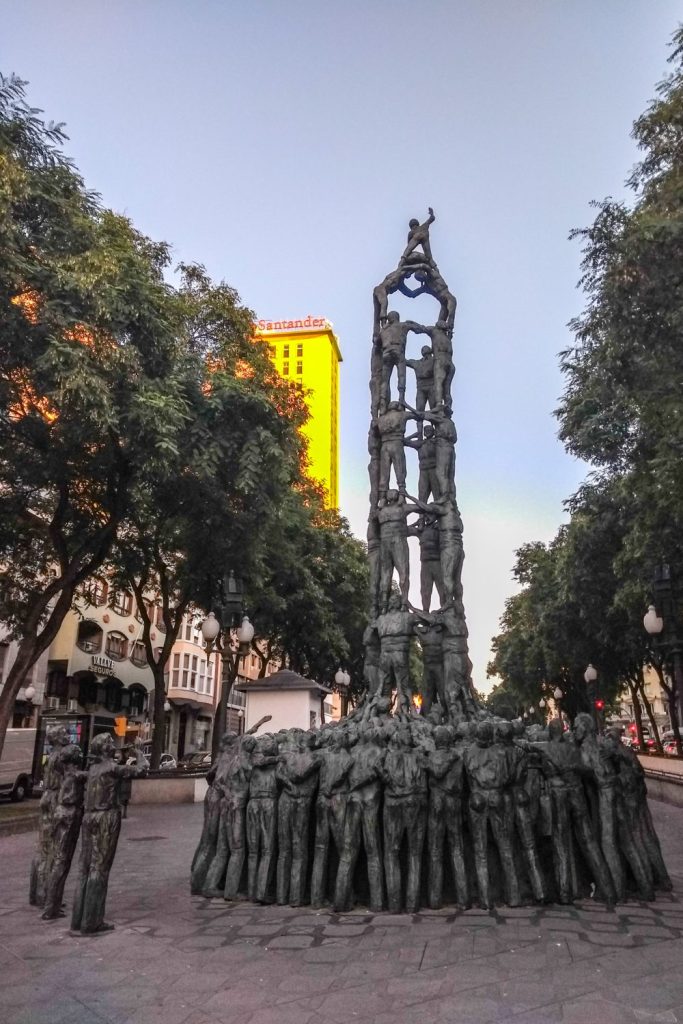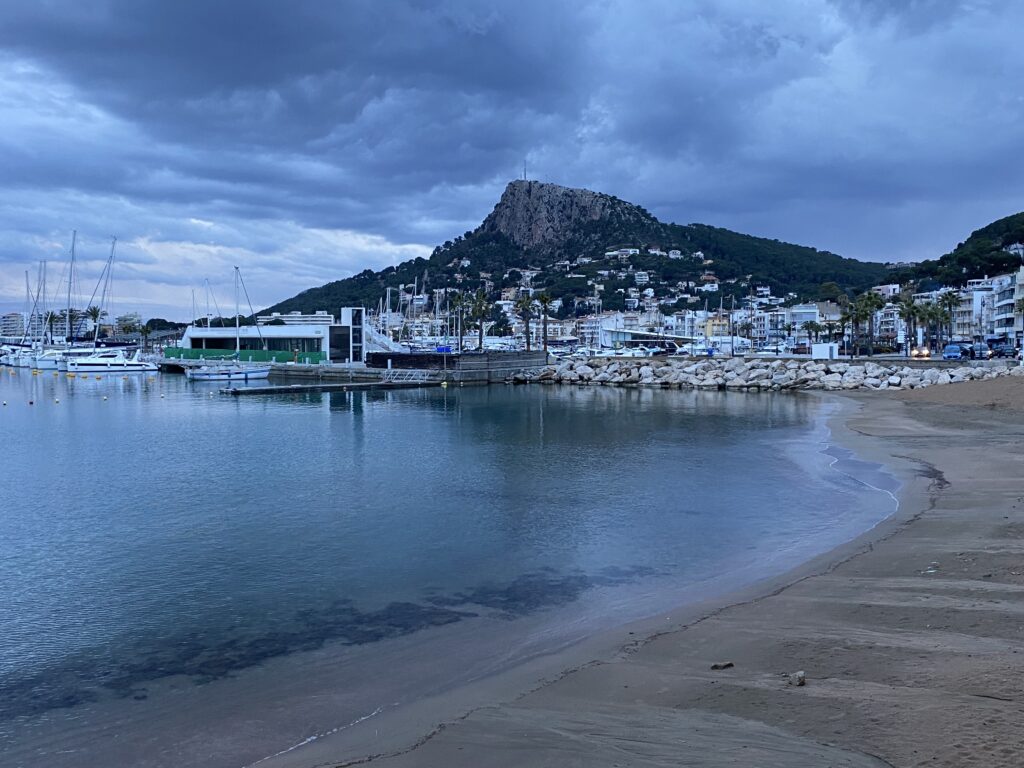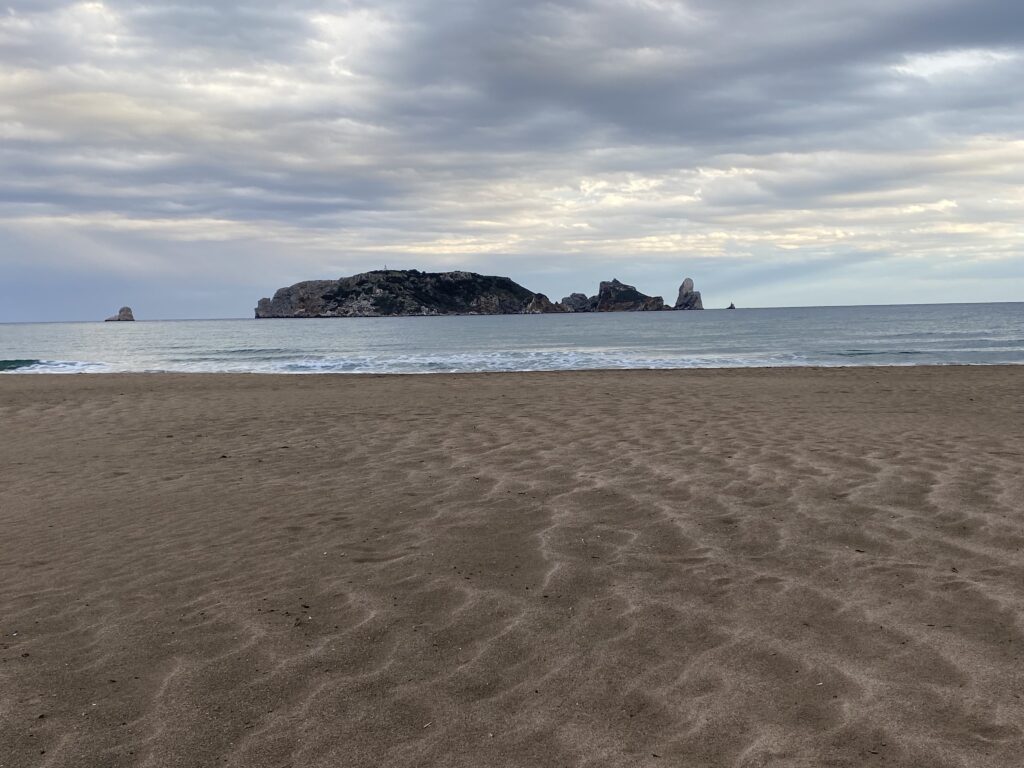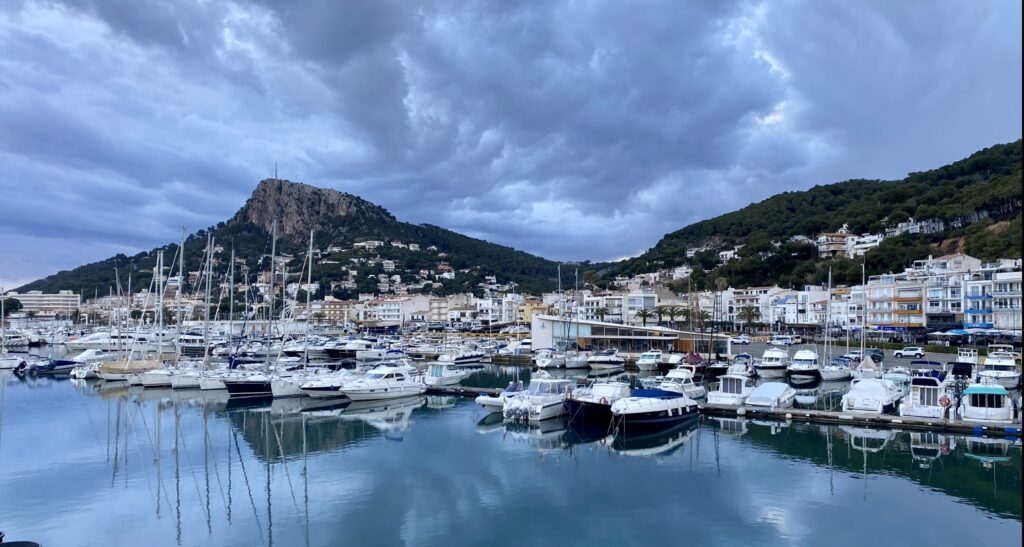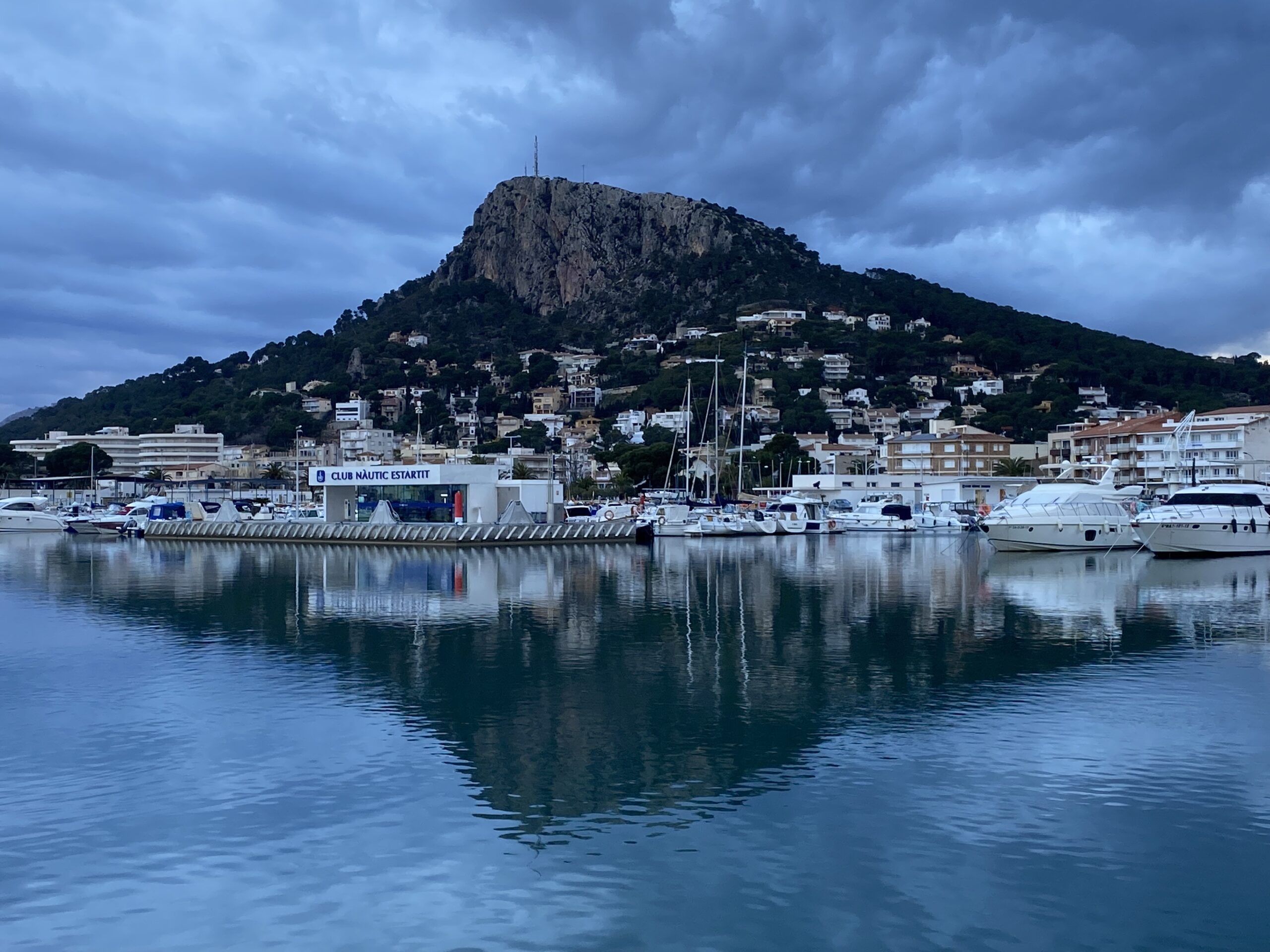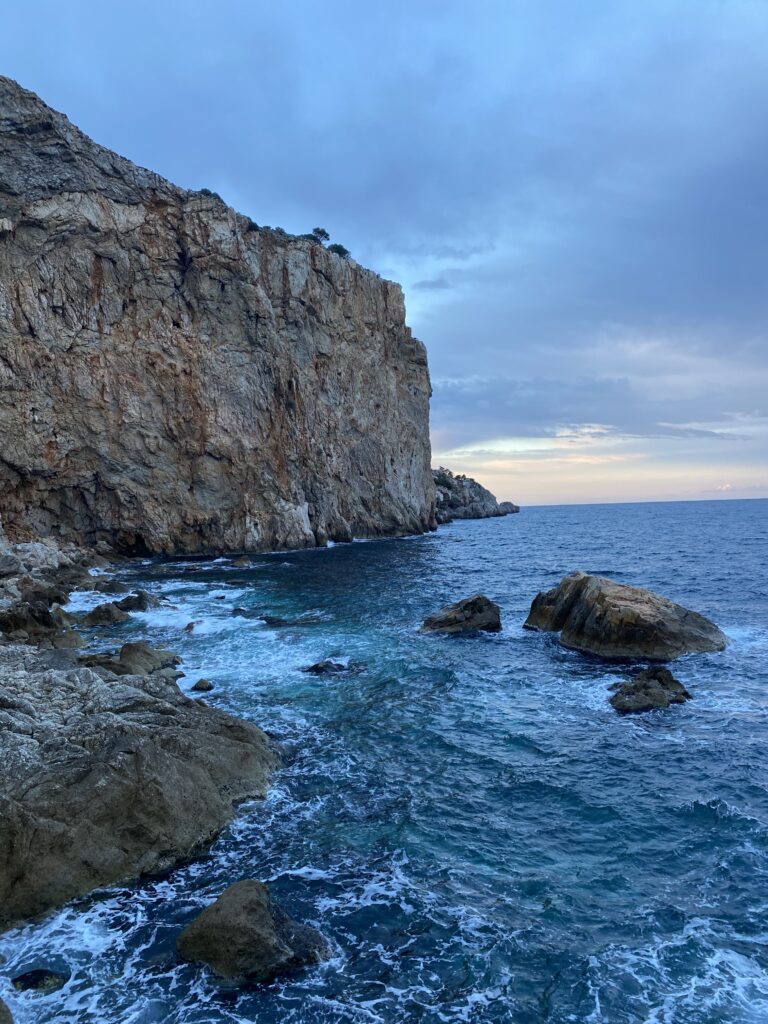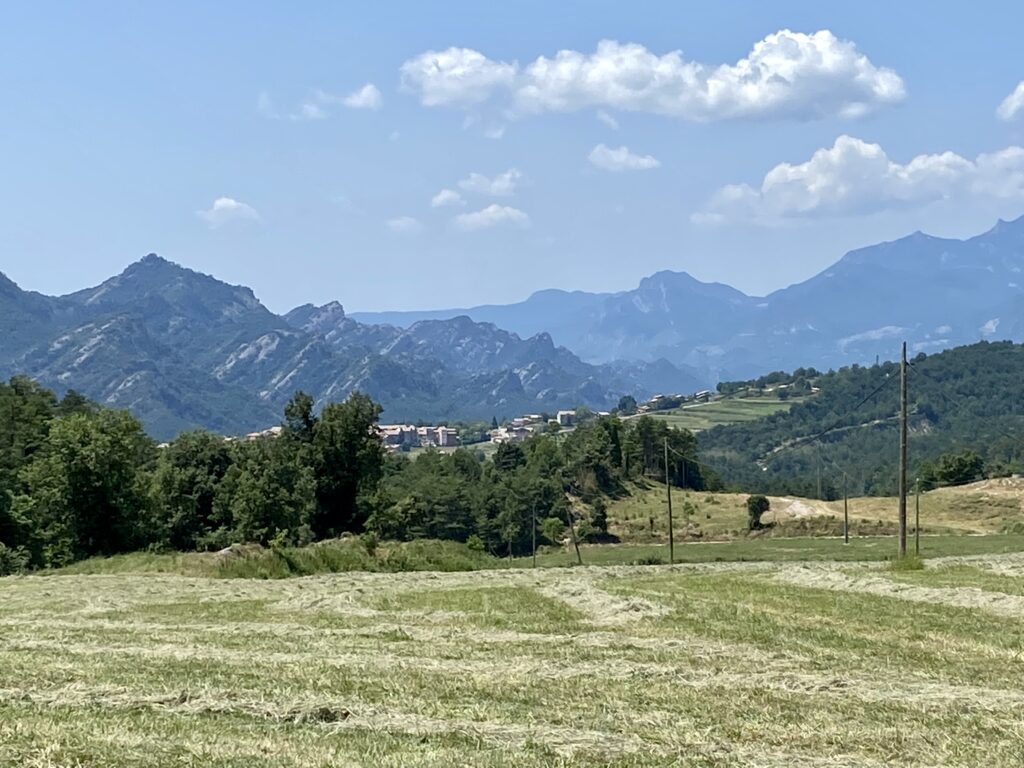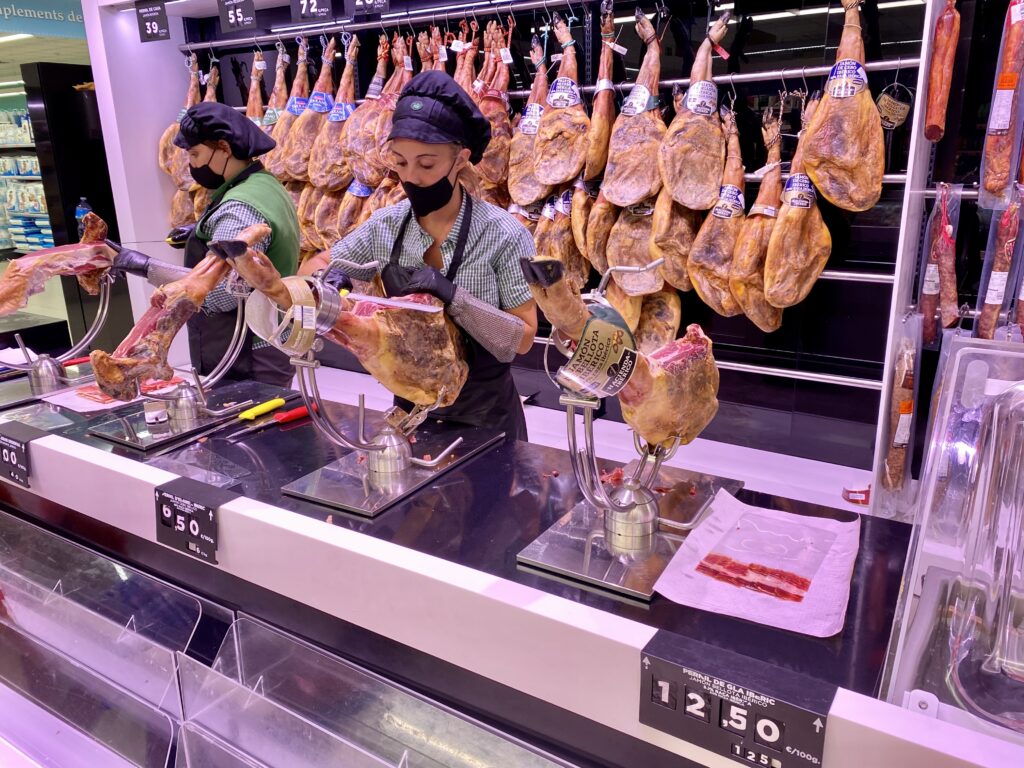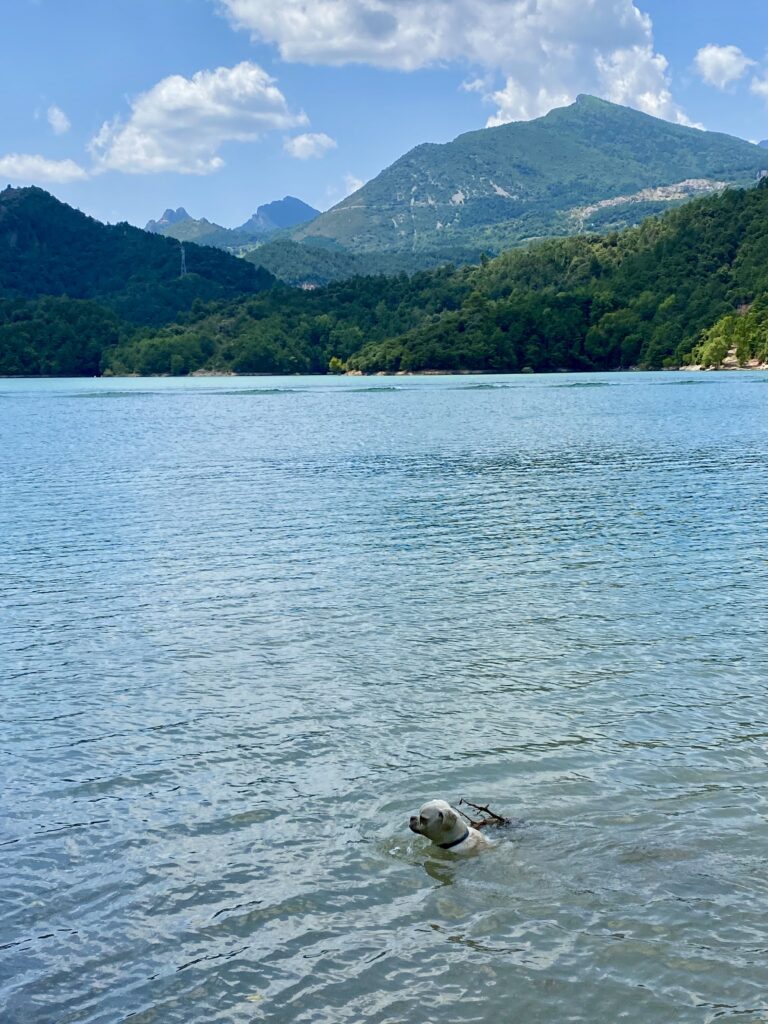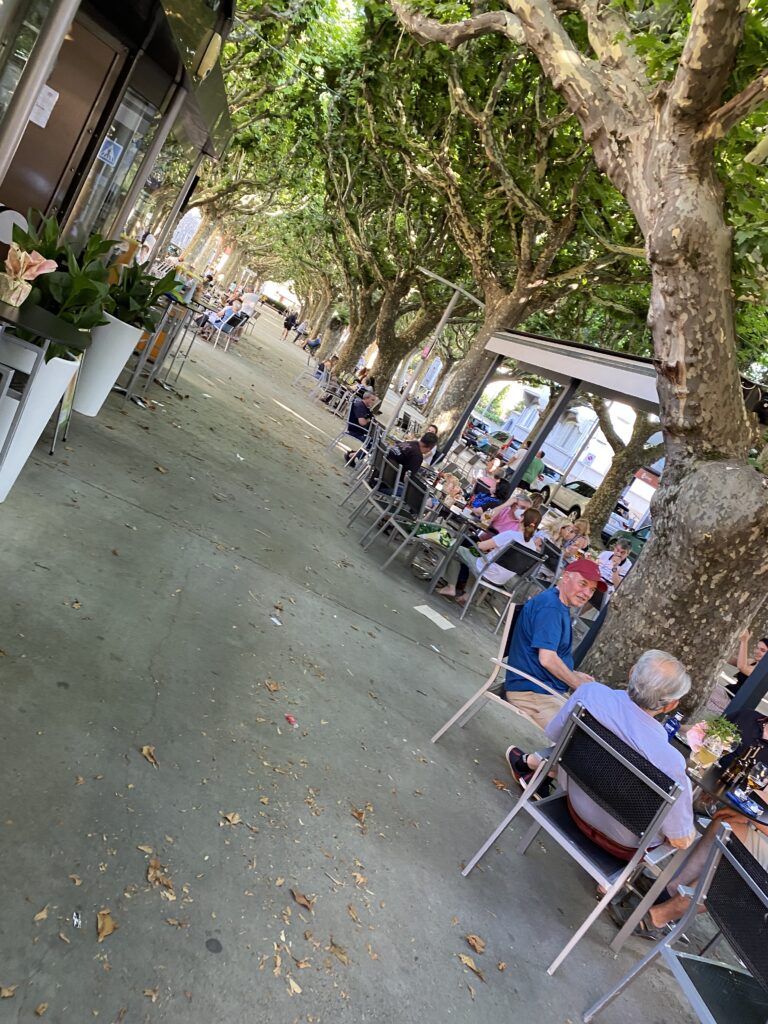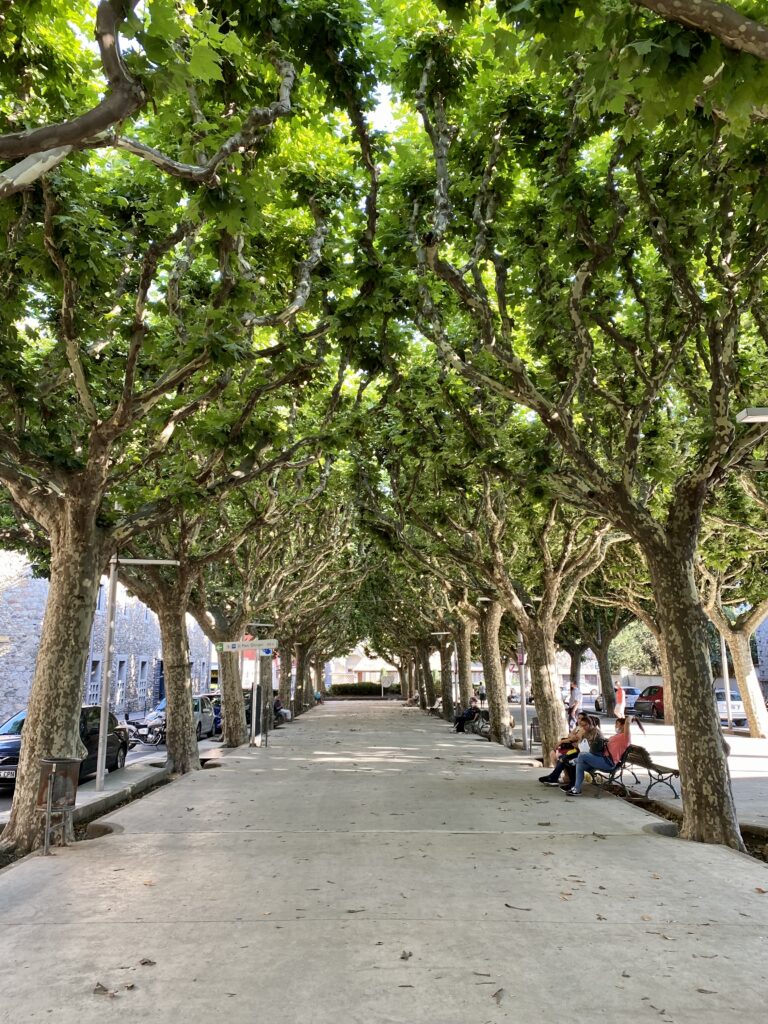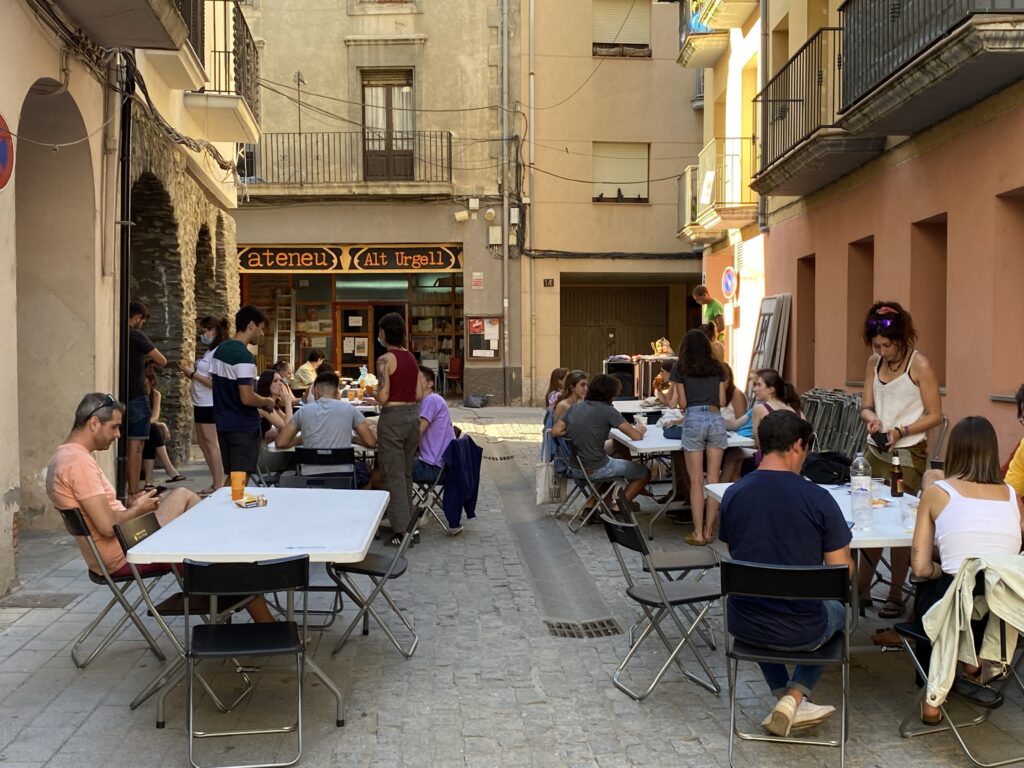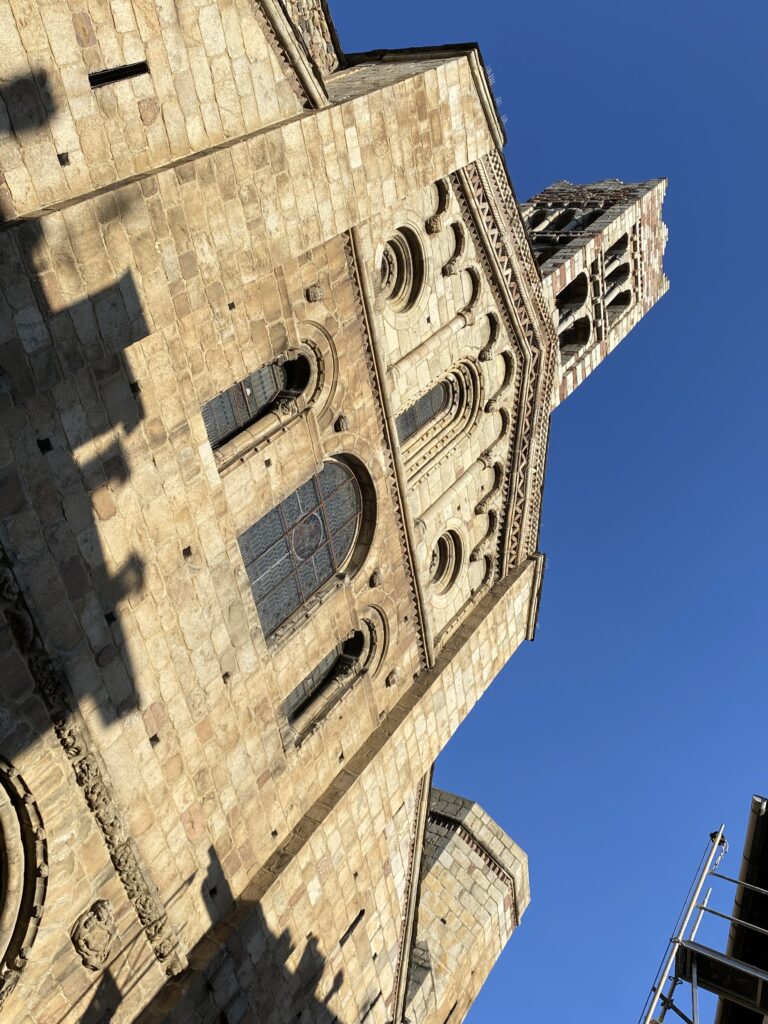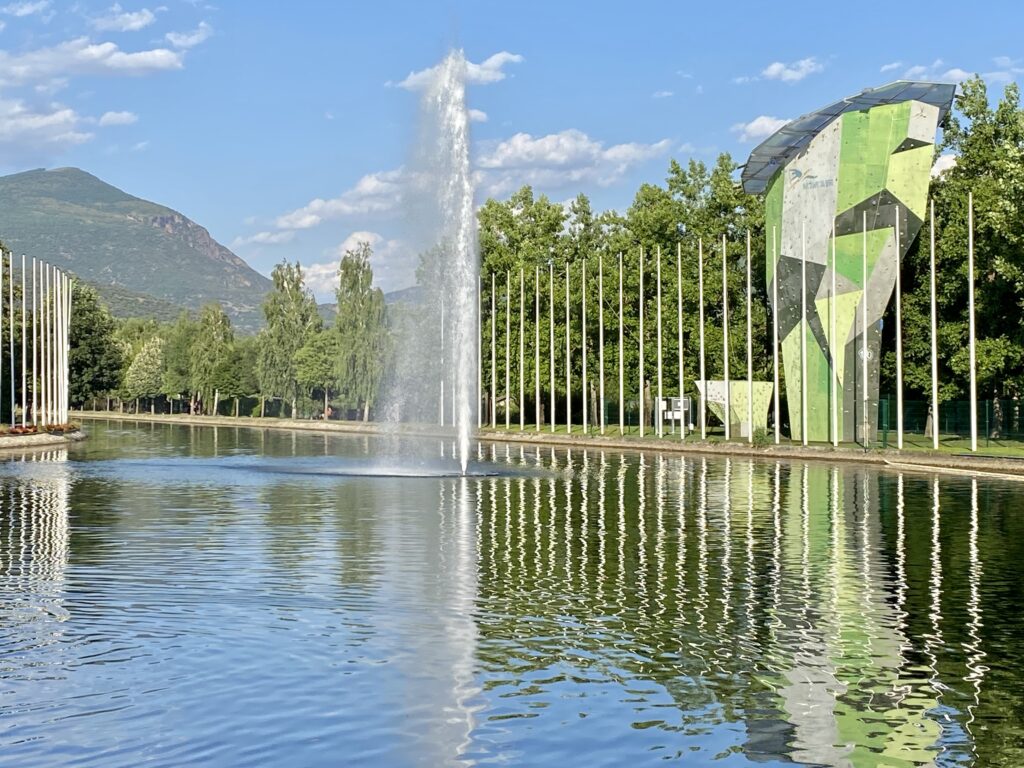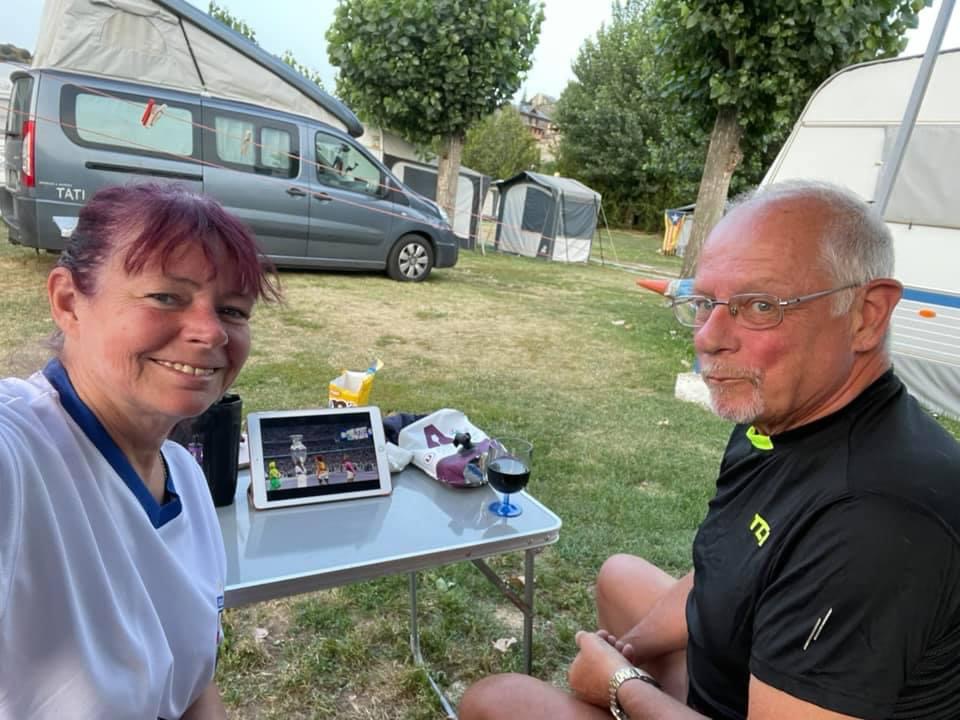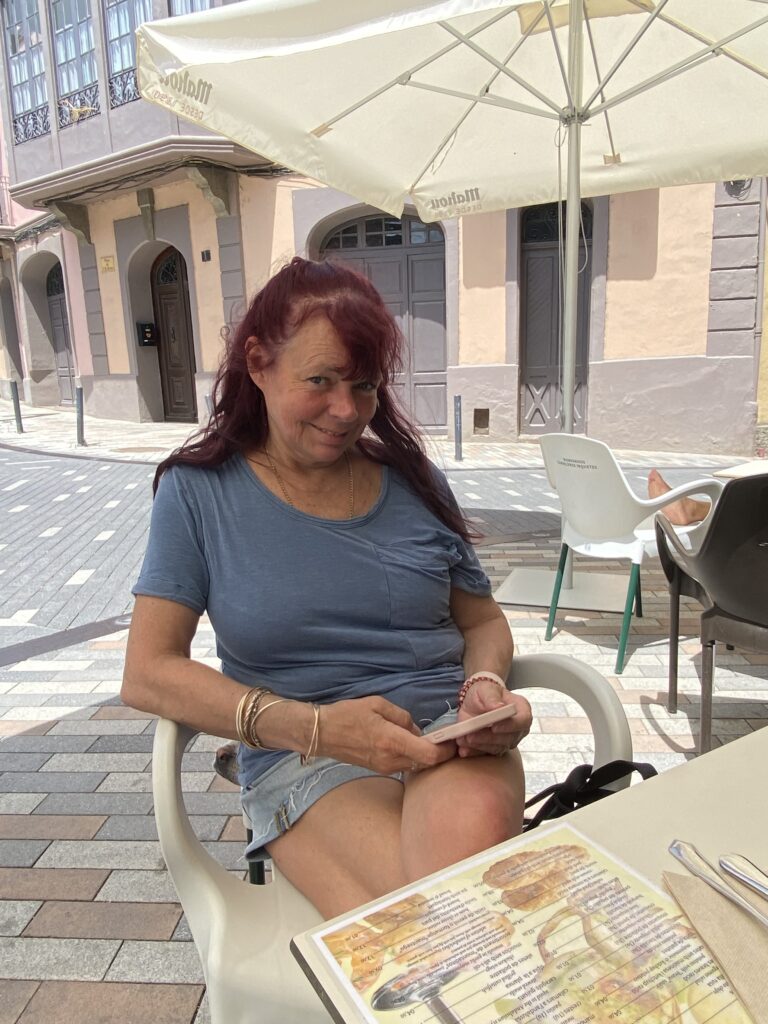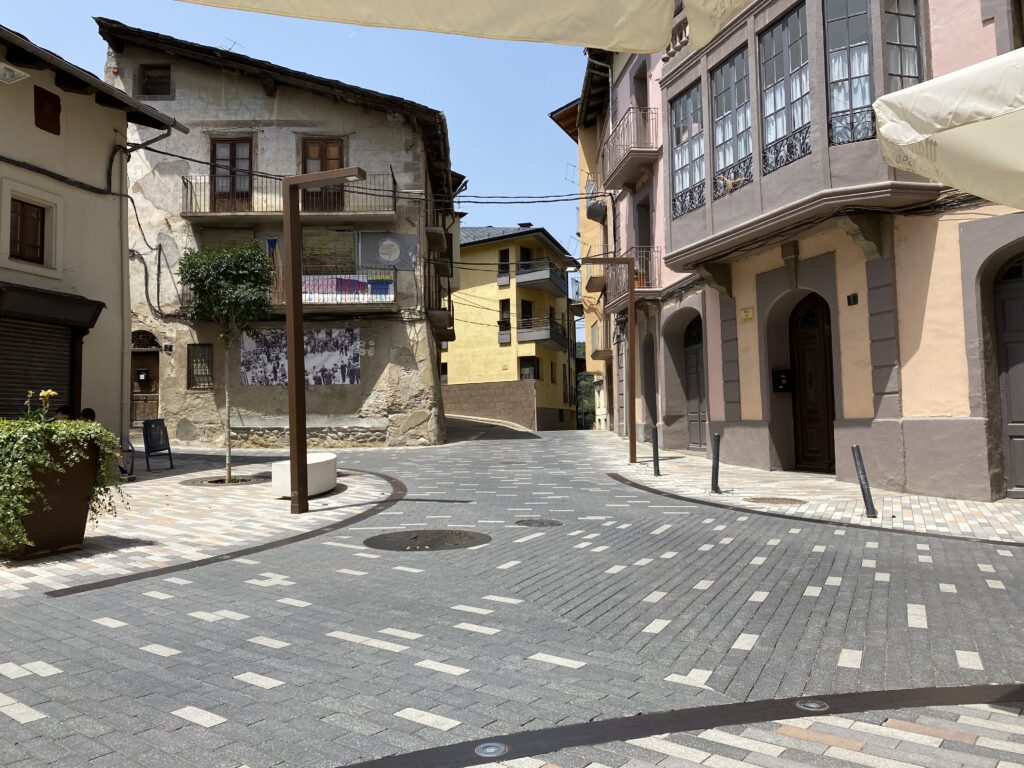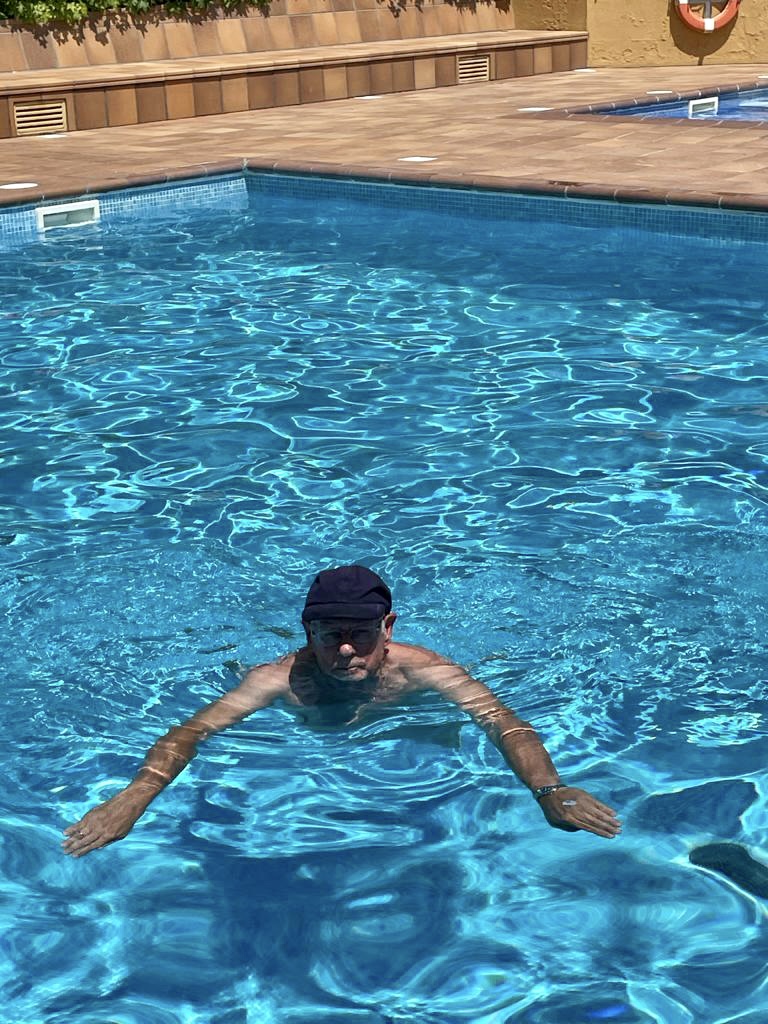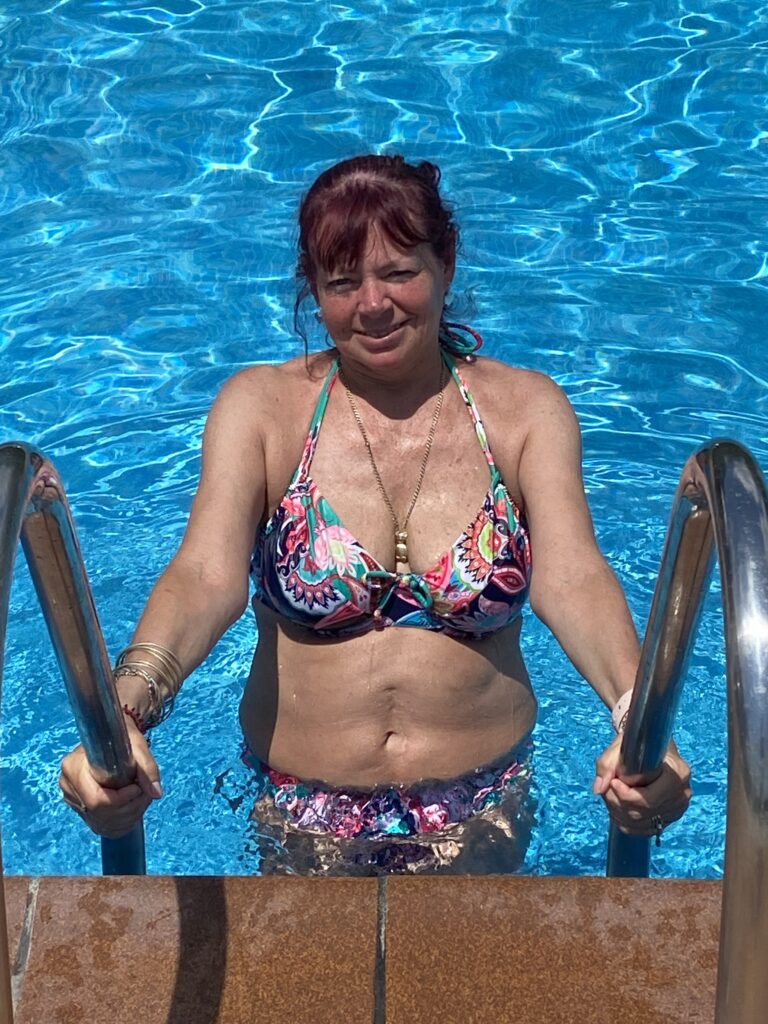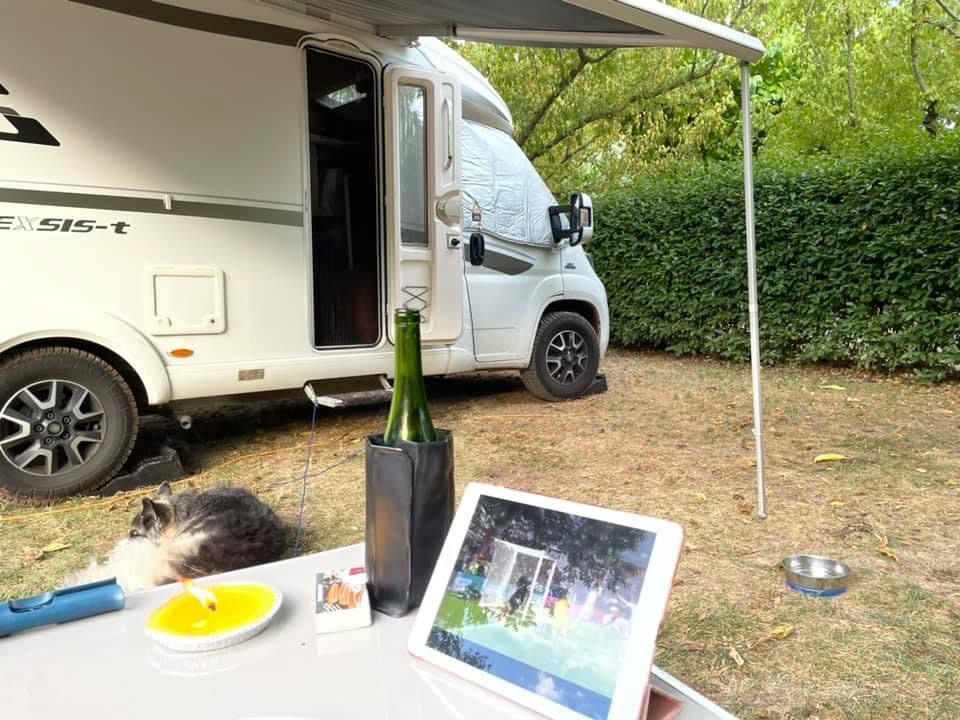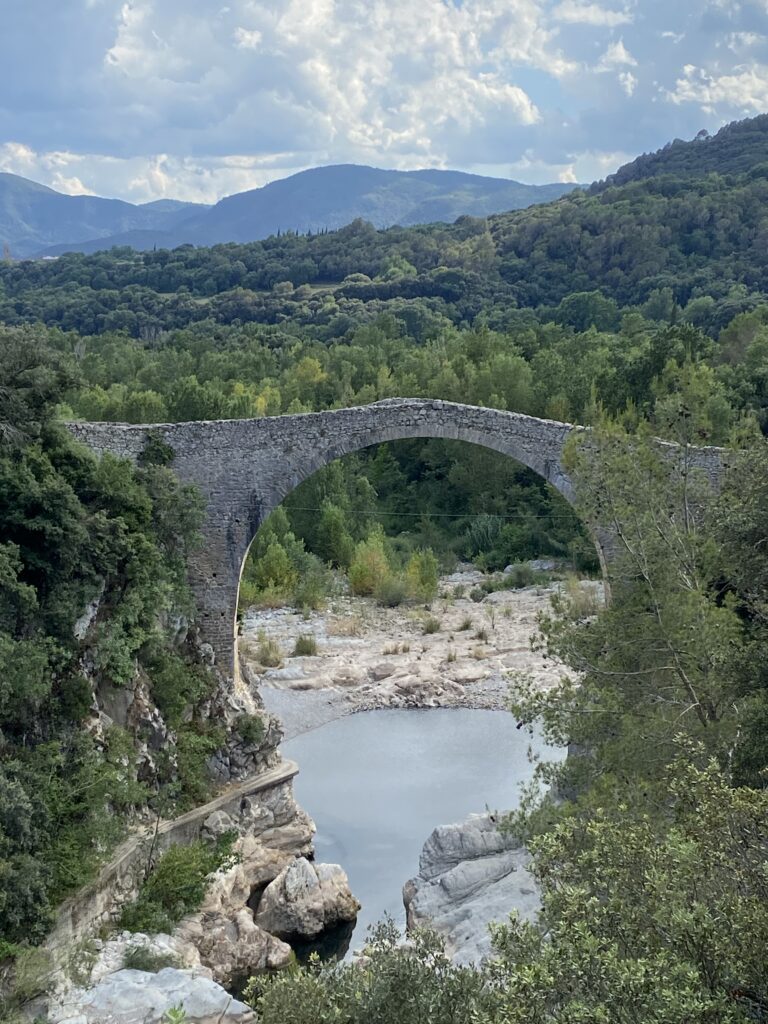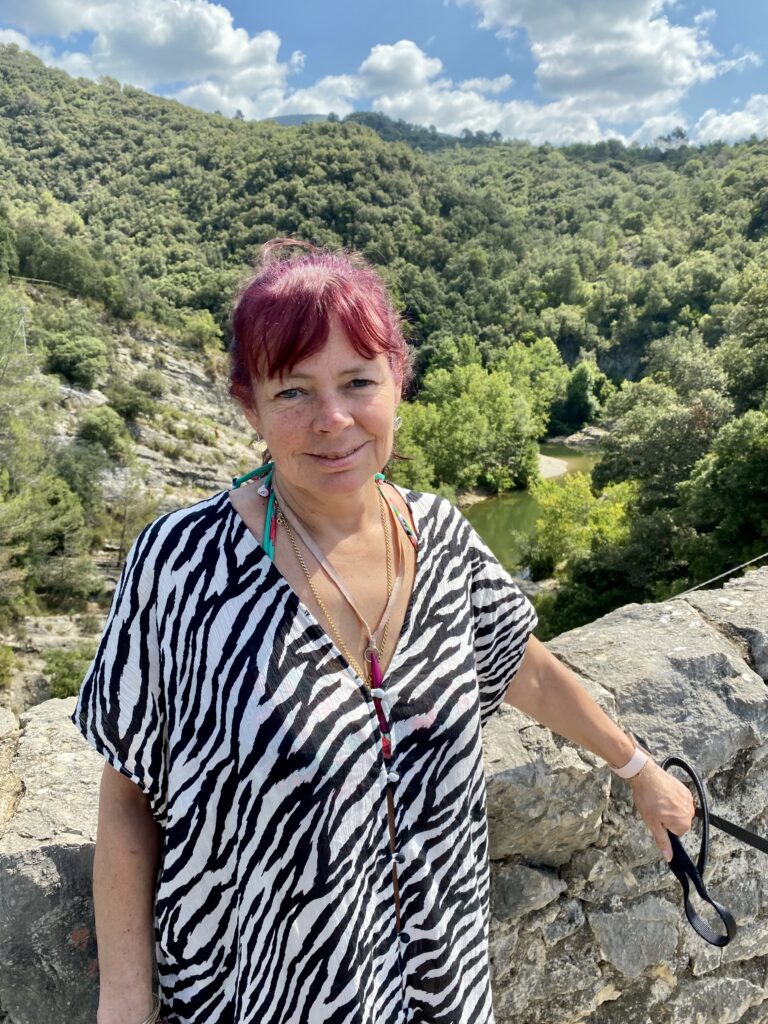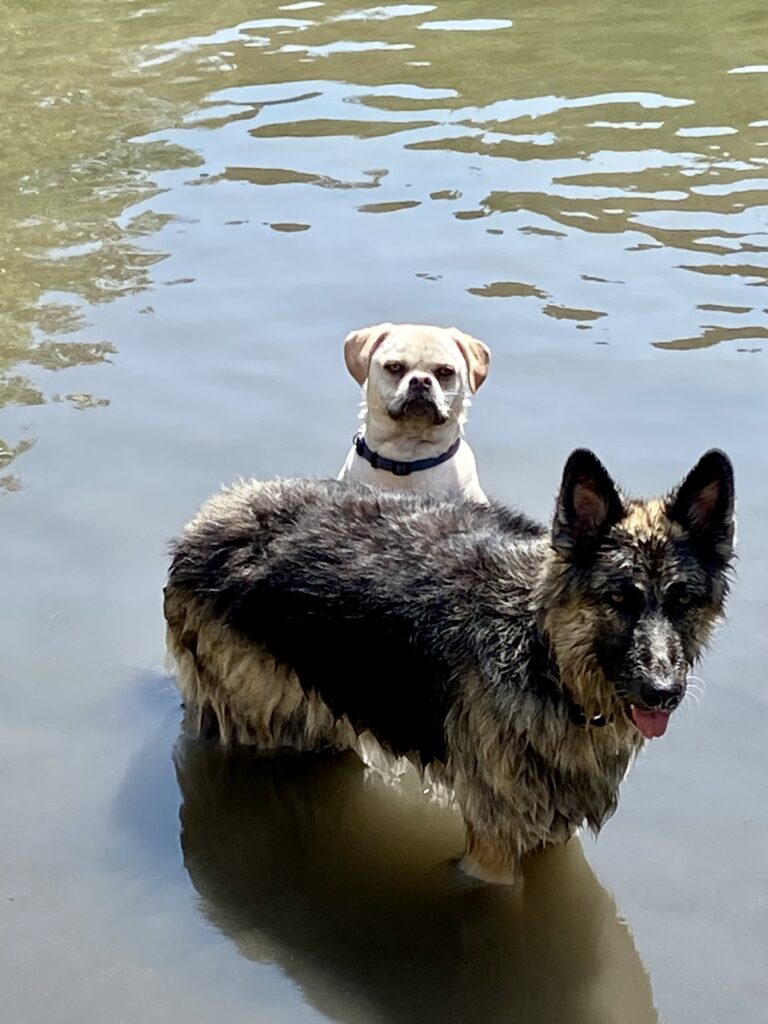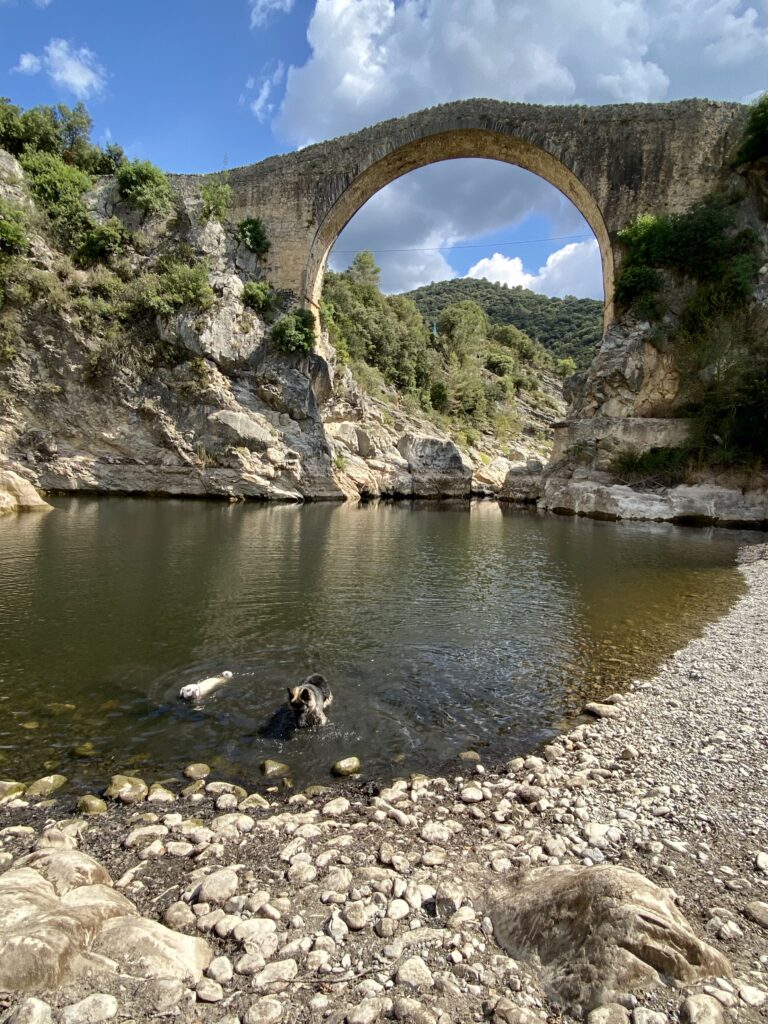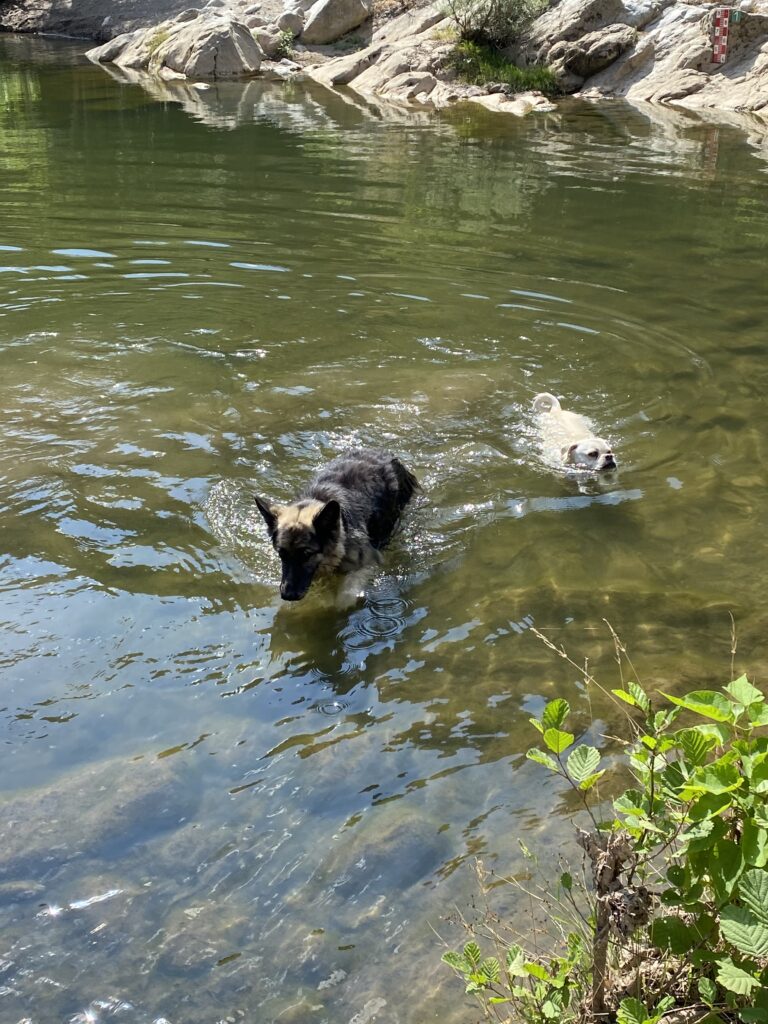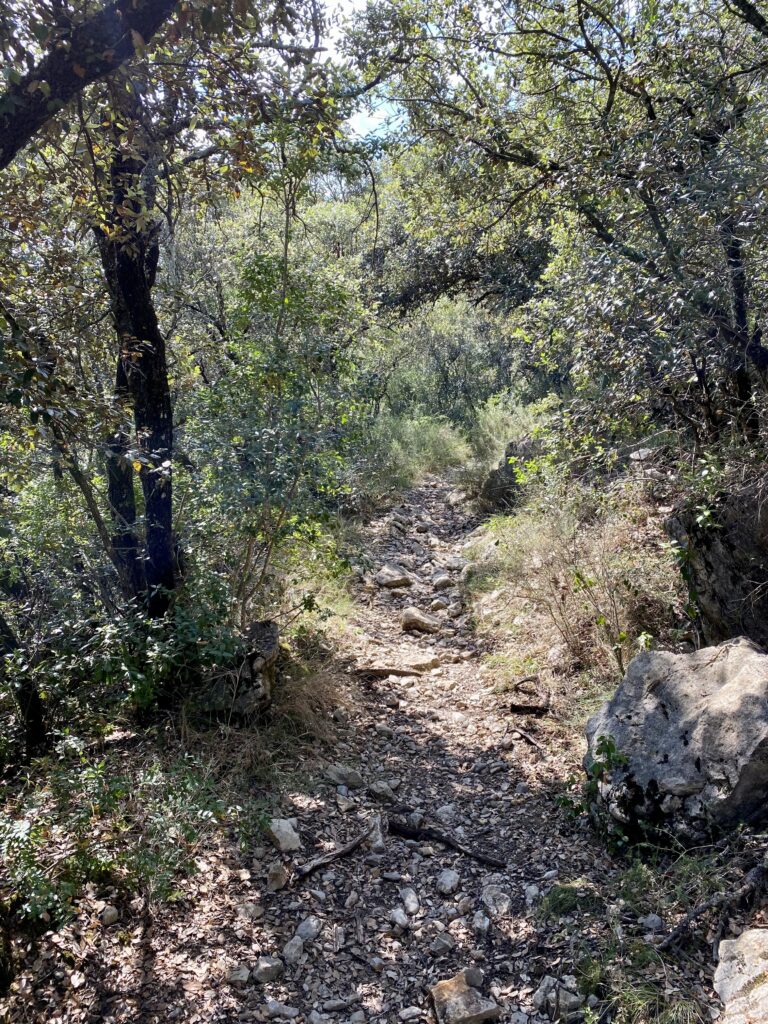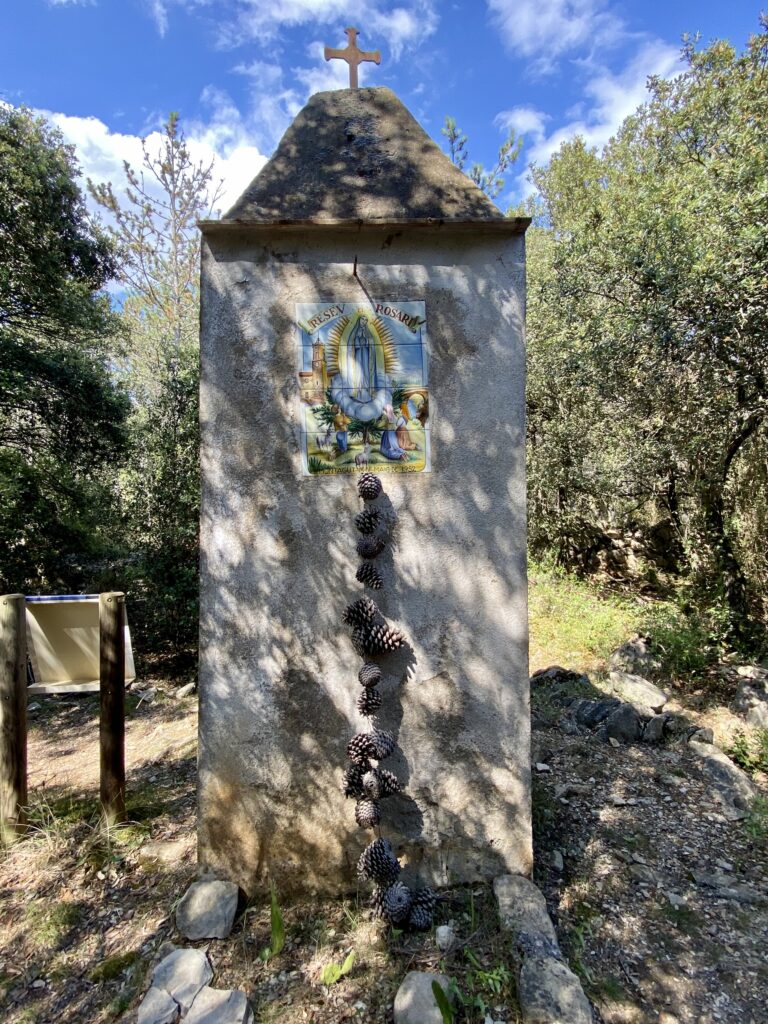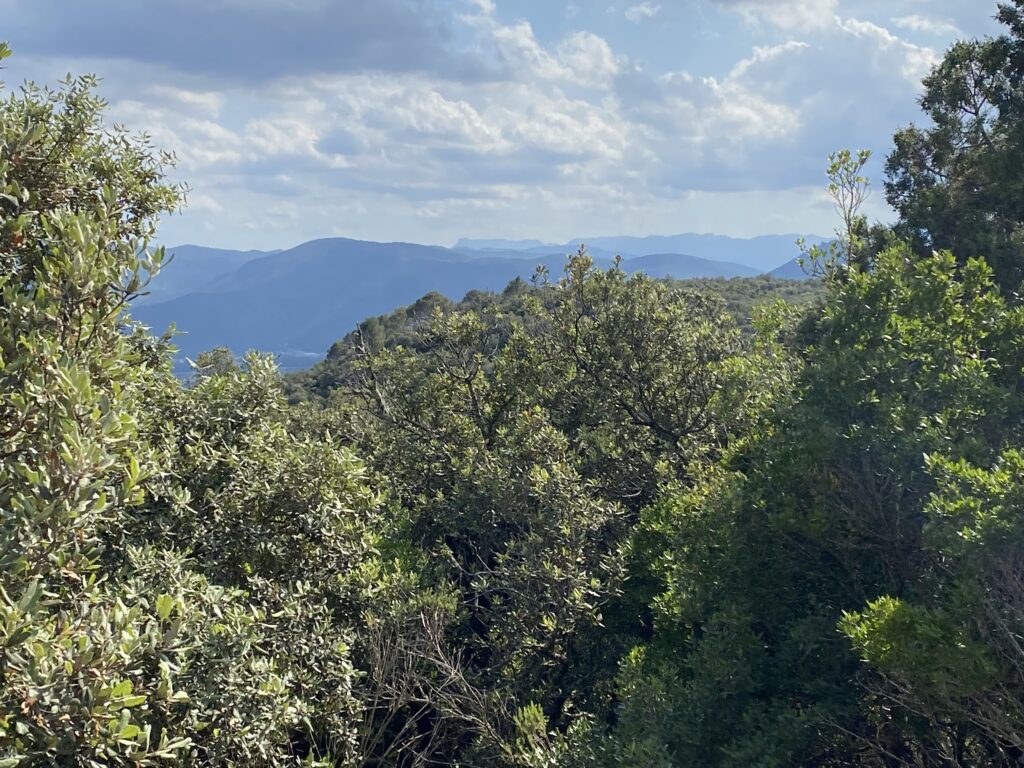We’d journeyed from Germany, through Switzerland and France, to Spain to escape the constant rain which seems to have been a feature of Northern Europe this last year. That was a good decision with the weather in Sitges (Catalonia) proving fine and the forecasts in Galicia and Asturias, in the far north west, looking even better. We decided to make our way to Galicia next (provided the weather stayed fine) by way of Aragon, Navarra, La Rioja and Castilla y Leon. Our next overnight stay would be in the small Aragonese village of Mequinenza, a 2.5 hour drive west.
We were almost halfway to Mequinenza when, looking for a place to stop for lunch, we discovered the small fortress town of Montblanc at the edge of the Prades Mountains. The town was founded by Alfonso I of Barcelona (Alfonso the Chaste) during the 12th century to protect the road between Lleida and Tarragona and it clearly prospered; as is evidenced by it’s huge church and various other impressive buildings. I don’t understand how I could have previously overlooked such an interesting place. It really is a hidden gem.
I parked just outside the medieval town walls close to the Convent de la Serra (on Paseo Josep Conangla) to take a quick look at the large church near the top of the town. There’s a sizeable flat topped mound just inside the town walls which provides views over the city and towards the Prades Mountains but the view of the back of the church (the Iglesia Santa Maria La Mayor) is less than impressive and for a moment I was tempted to return to the Van. I’m so glad I didn’t.
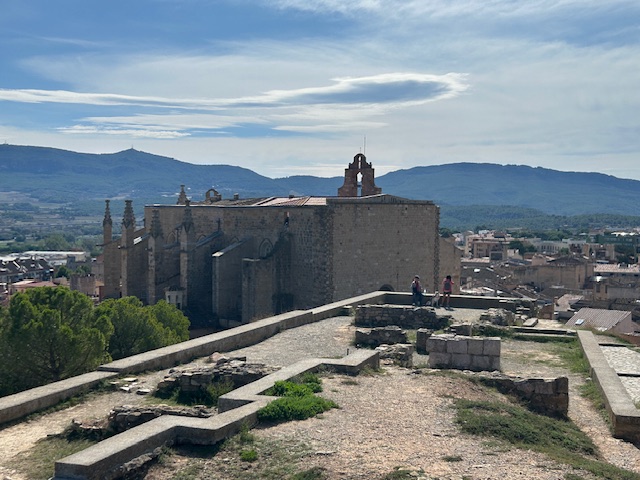


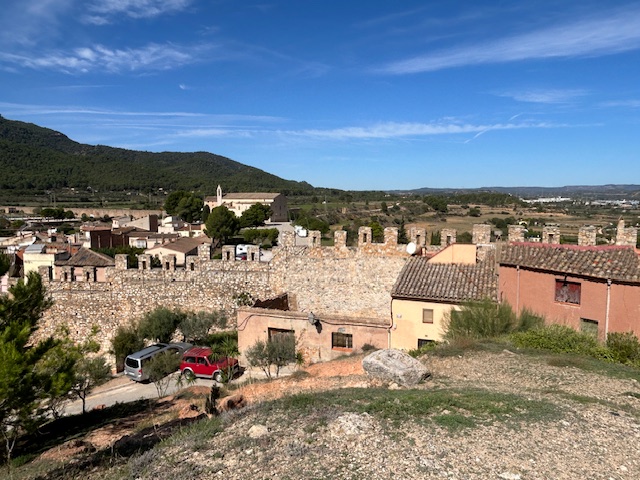
When I say ‘less than impressive’, I actually mean ‘odd’. It’s a mishmash of styles and, well, on the outside at least has a wholly peculiar appearance. The back of the church can be counted amongst the least attractive of any church I have seen. This can all be explained in that it started life as a small Romanesque church dedicated to Santa Maria and as it’s congregation grew, work began on a Gothic style expansion. This expansion was frustrated by the Black Death (the Plague) which devastated the town in terms of the population and money with which to finish the church and so one side of the church was simply bricked up without any ornamentation. When work resumed in the 17th century an ornate Baroque facade replaced much of the Gothic facade, which had never been finished because of the Plague and had also been damaged during the Reapers War, leaving us with the confused architectural structure that is now the Iglesia de Santa Maria La Mayor de Montblanc.
Don’t misunderstand me. The church still has much going for it. It just looks less than impressive from the back. The front of the church, with it’s Baroque style facade with Renaissance influences, is stunning. It also has some beautiful chapels (another sign of the town’s previous affluence) and a bell tower which it is possible to ascend.
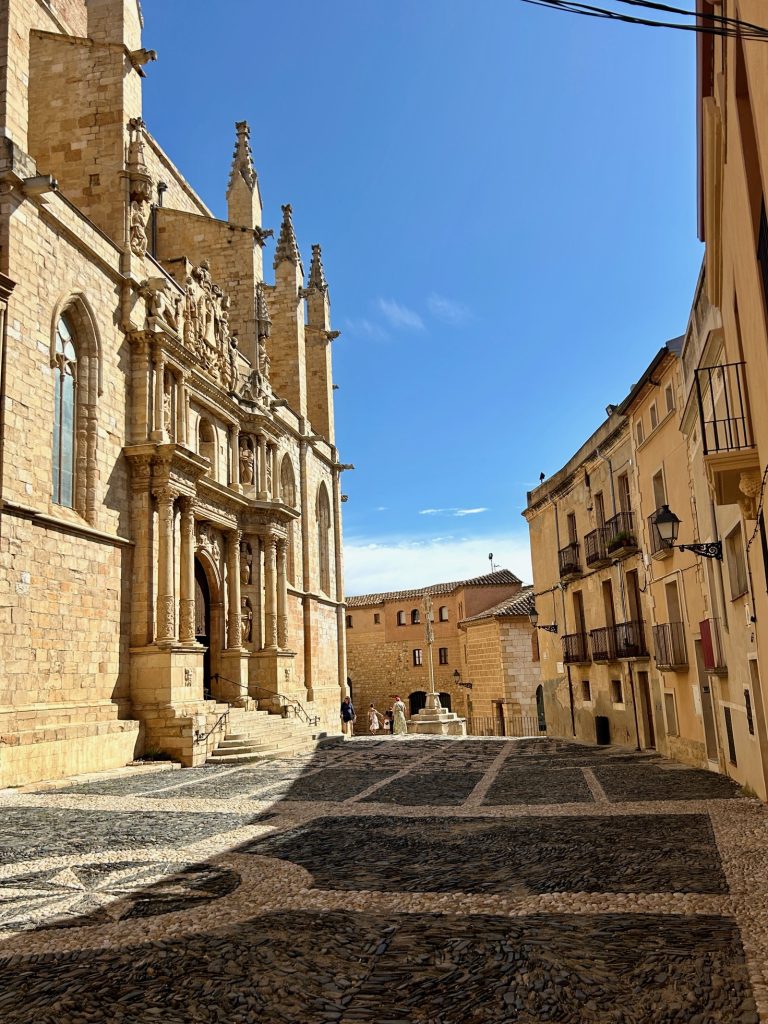

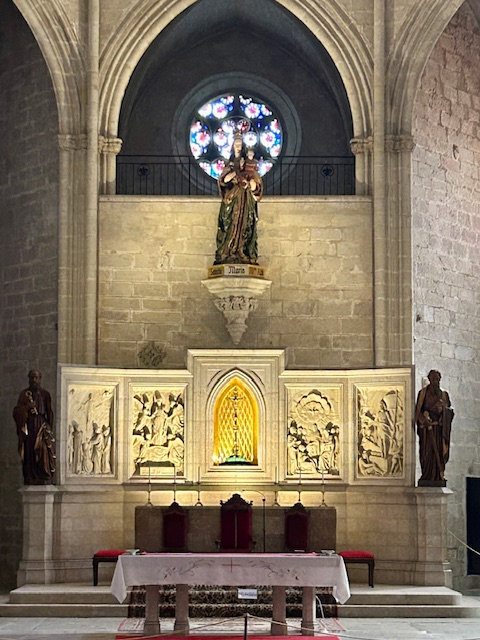
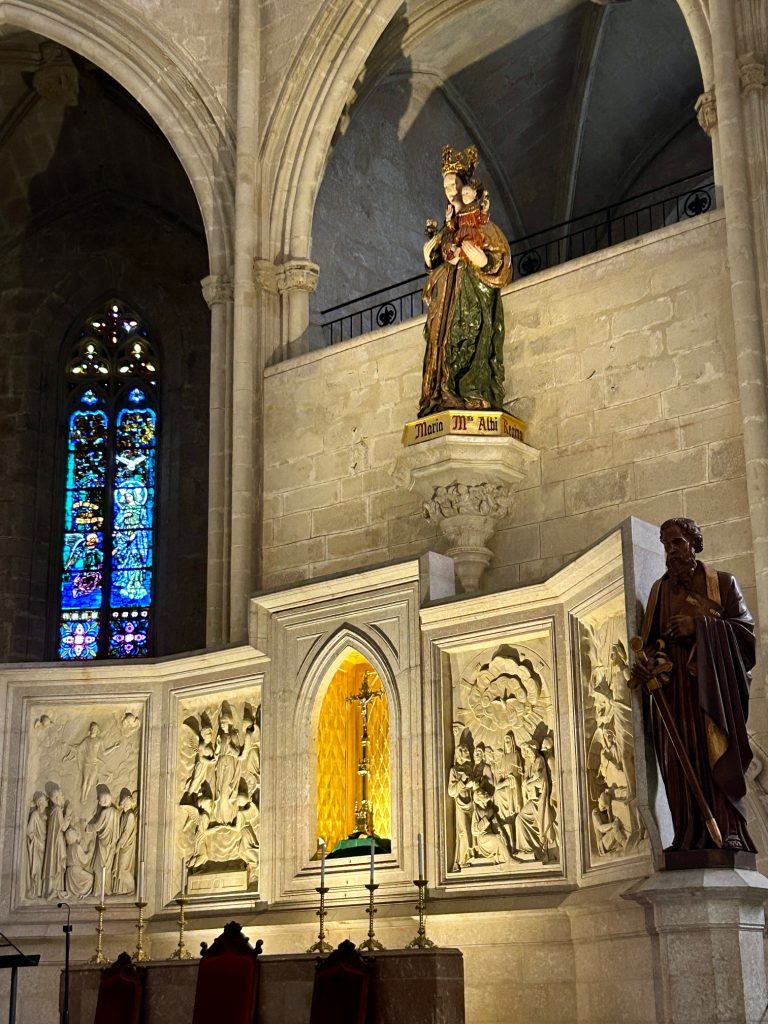
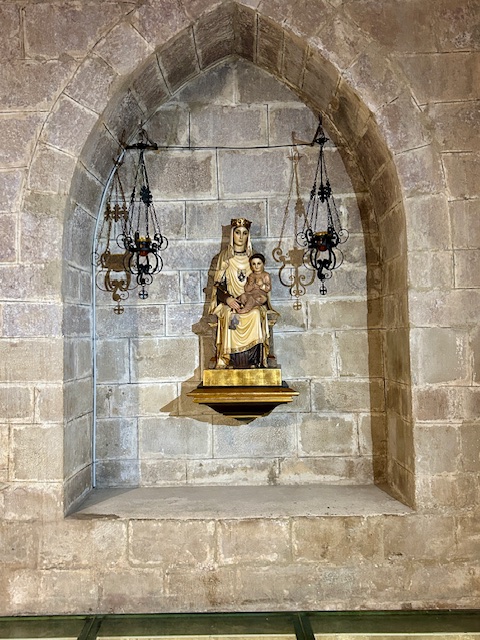

I said bell-tower but it is not a tower as such. You actually climb stairs to a roof terrace where a half dozen or so bells are situated. Timing is everything and as I was climbing the stairs, the bells chimed for 11am. Let me tell you, they were loud.
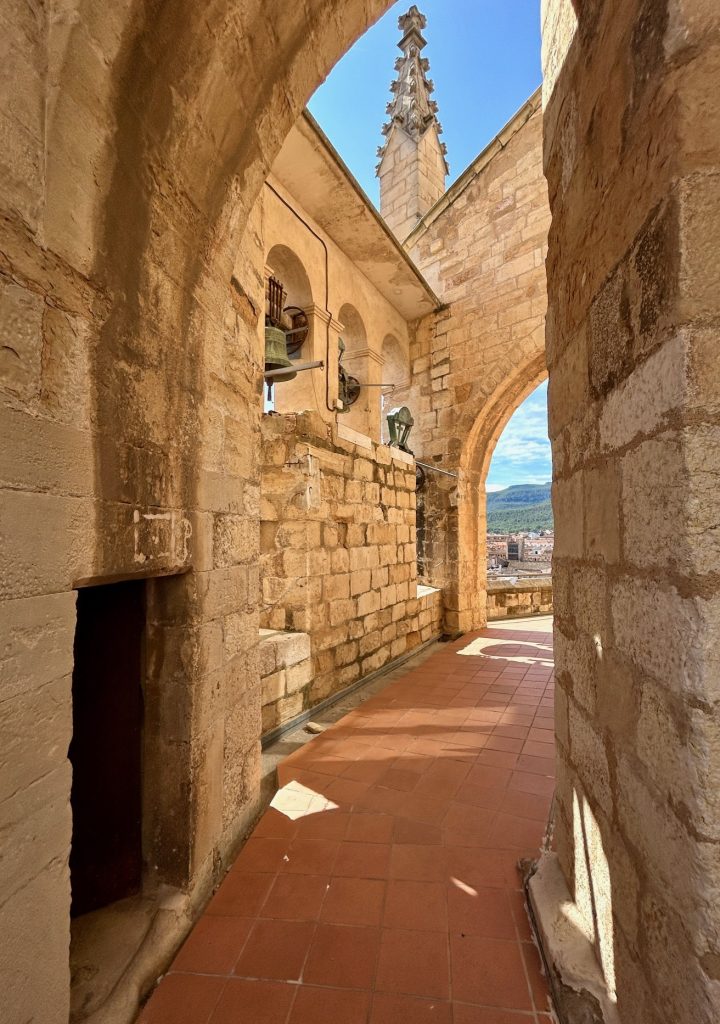
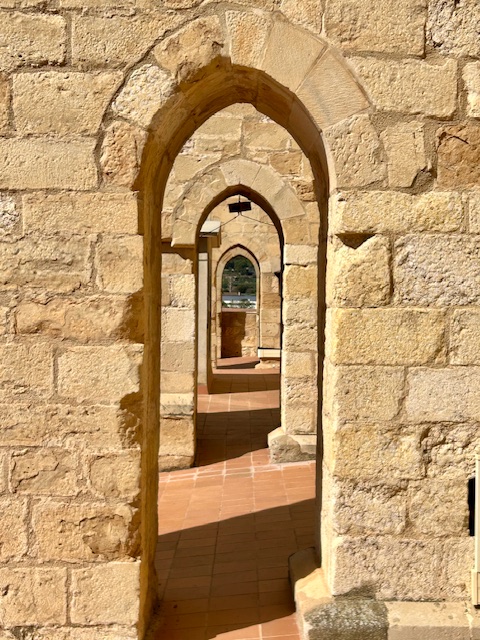
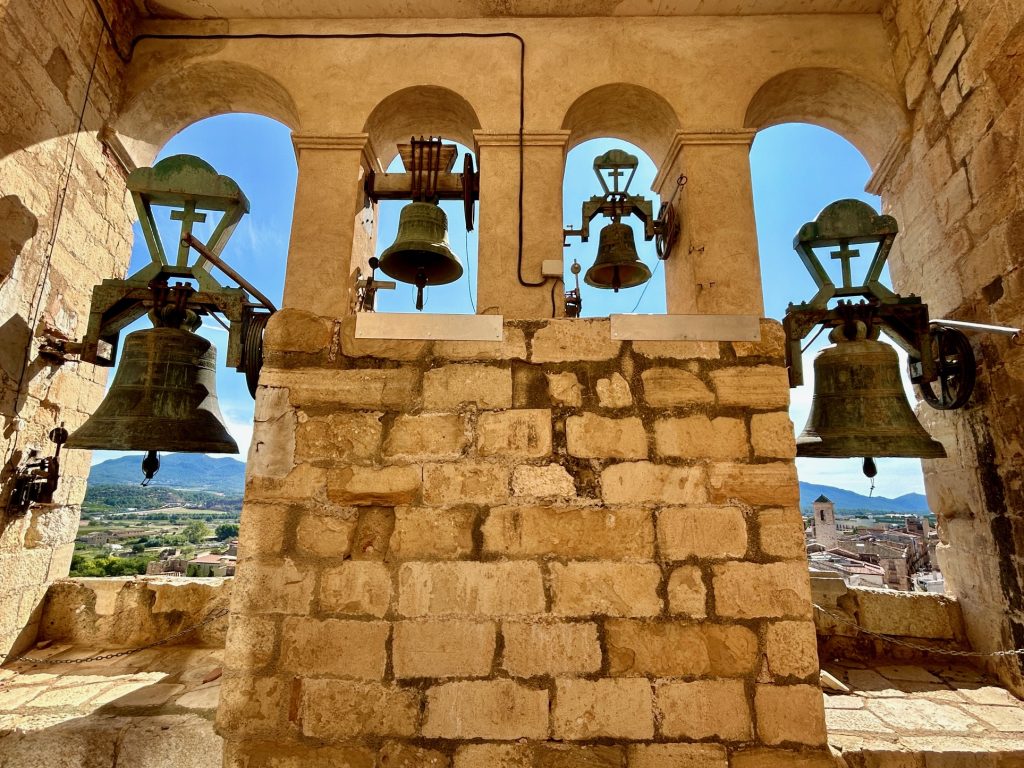

I had stayed too long in the church already but had to see a little more of the town before returning to the Van for lunch which Vanya was preparing (had long finished repairing) and; I might as well get hung for a sheep as a lamb. No, it was a cold lunch and I was okay for a while yet. Thank goodness for cellular phones.
Montblanc’s old town centre is enclosed in some of the best preserved medieval castle walls to be seen anywhere in Spain and the narrow cobbled streets I followed on my way to the main square proved much the same. Higher buildings than is usual for such a rural part of the Region provided yet another example of the town’s previous wealth and, given how hot the day had already become, made for refreshingly cool streets.
There were a surprising number of people out and about; both on the streets, where local women were chatting excitedly with friends or neighbours they had chanced upon while on their way home from whatever it was they were doing and; in the Placa Mayor, where local men (their husbands?) were drinking beer andarguing and laughing loudly together. It was that happy, cheerful time of the day shortly before the afternoon siesta begins and after which the town centre would suddenly and quickly empty. I’m not trying to typecast men and women with that description but, the whole scene simply took me back to my childhood in Cyprus and Kenya where much the same scenes were played out almost every day before us kids were sent off for an afternoon nap. I really hated that time of the day.

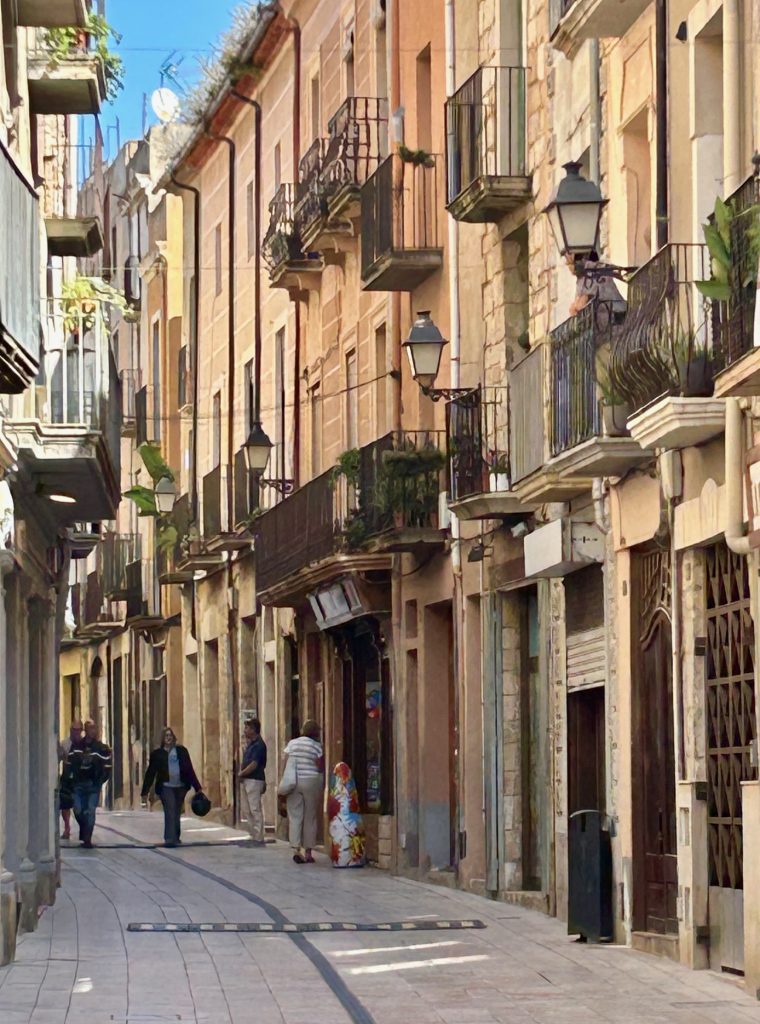


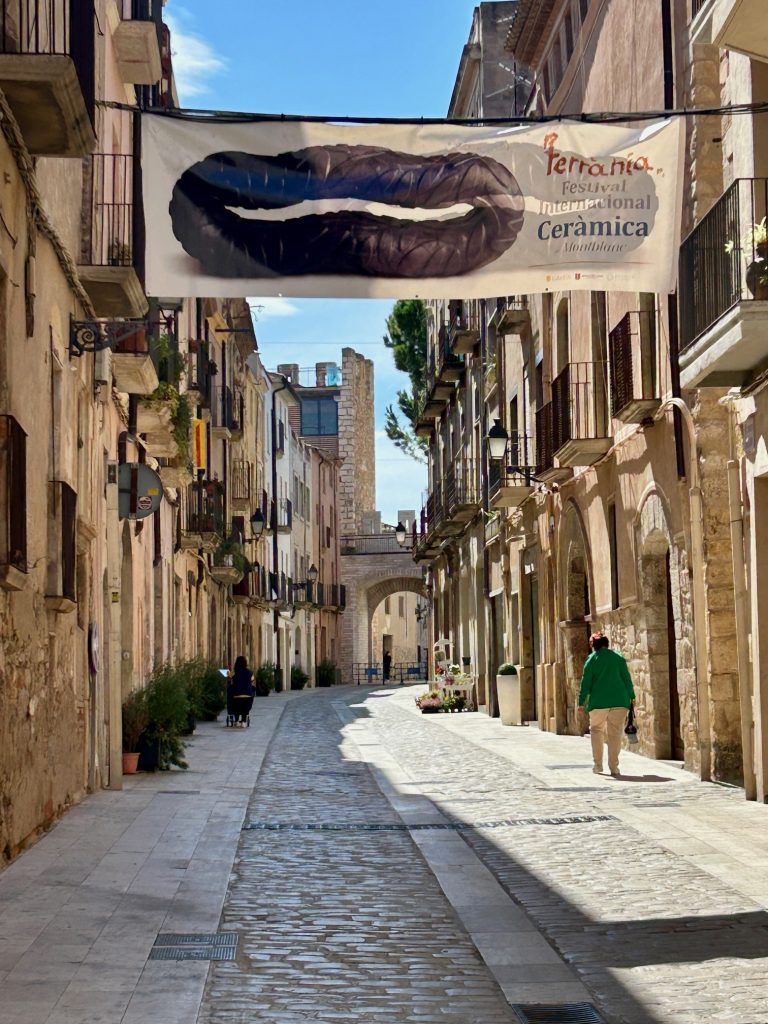
It was time to get back to the Van. The return journey took me back past the church.
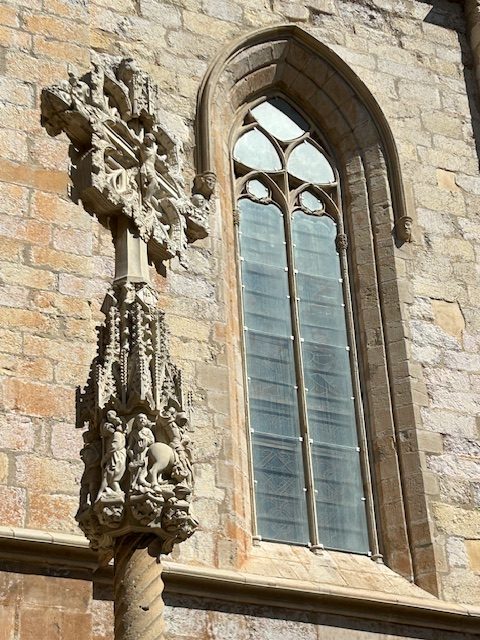
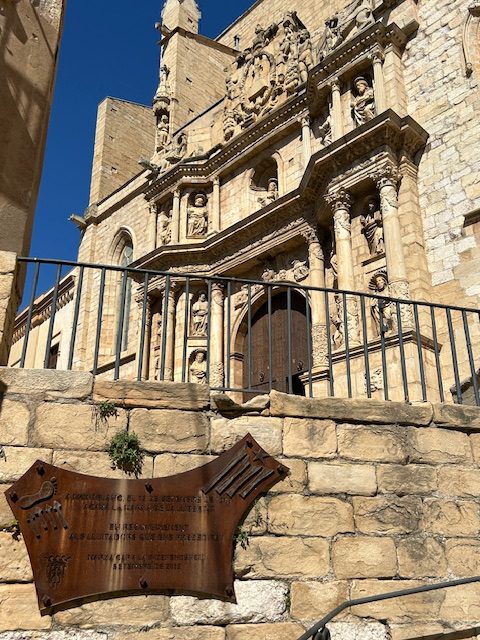
This was only a short stop but it proved a pleasant surprise and I would gladly revisit Montblanc. Also there is a World Heritage Site, the Monastir de Poblet, just 9 kilometres down the road that could be worth visiting.
Oh, and I don’t think I mentioned that according to local legend, Sant Jordi (Saint George) killed his dragon in Montblanc. It’s known as The Golden Legend in Catalonia. I reproduce below what I read about it:-
It seems that “Saint George was travelling on horseback when he came to Montblanc, which at that time was being terrorized by a large dragon. In order to appease the dragon the townspeople had started to give it 2 sheep each day. When sheep weren’t enough they were replaced by human sacrifices. The king decreed that the person to be sacrificed should be chosen at random. Finally the day came that the king’s beautiful daughter was chosen for sacrifice.
The king tried to bargain with the townspeople but they insisted that the princess should be sacrificed as their children had been. Dressed as a bride, the princess was led to the dragon’s lair when, by chance, Saint George arrived at the town. St George asked the princess what was happening and she told him about the dragon and asked him to leave before he was hurt. Instead of leaving the princess to be eaten, St George fought and slayed the dragon.”
Clearly the people of Montblanc believe this legend because every year during April the town stages a week long Medieval Fair which includes a medieval feast, jousting tournaments, a correfoc and a re-enactment of the legend of Sant Jordi. That would be fun.
Anyway, on to Mequinenza.

